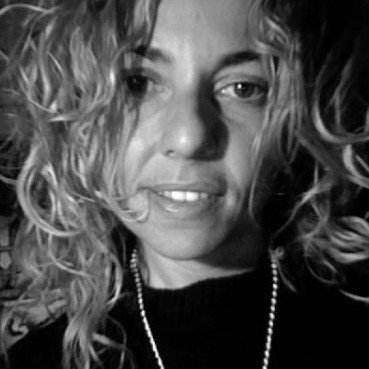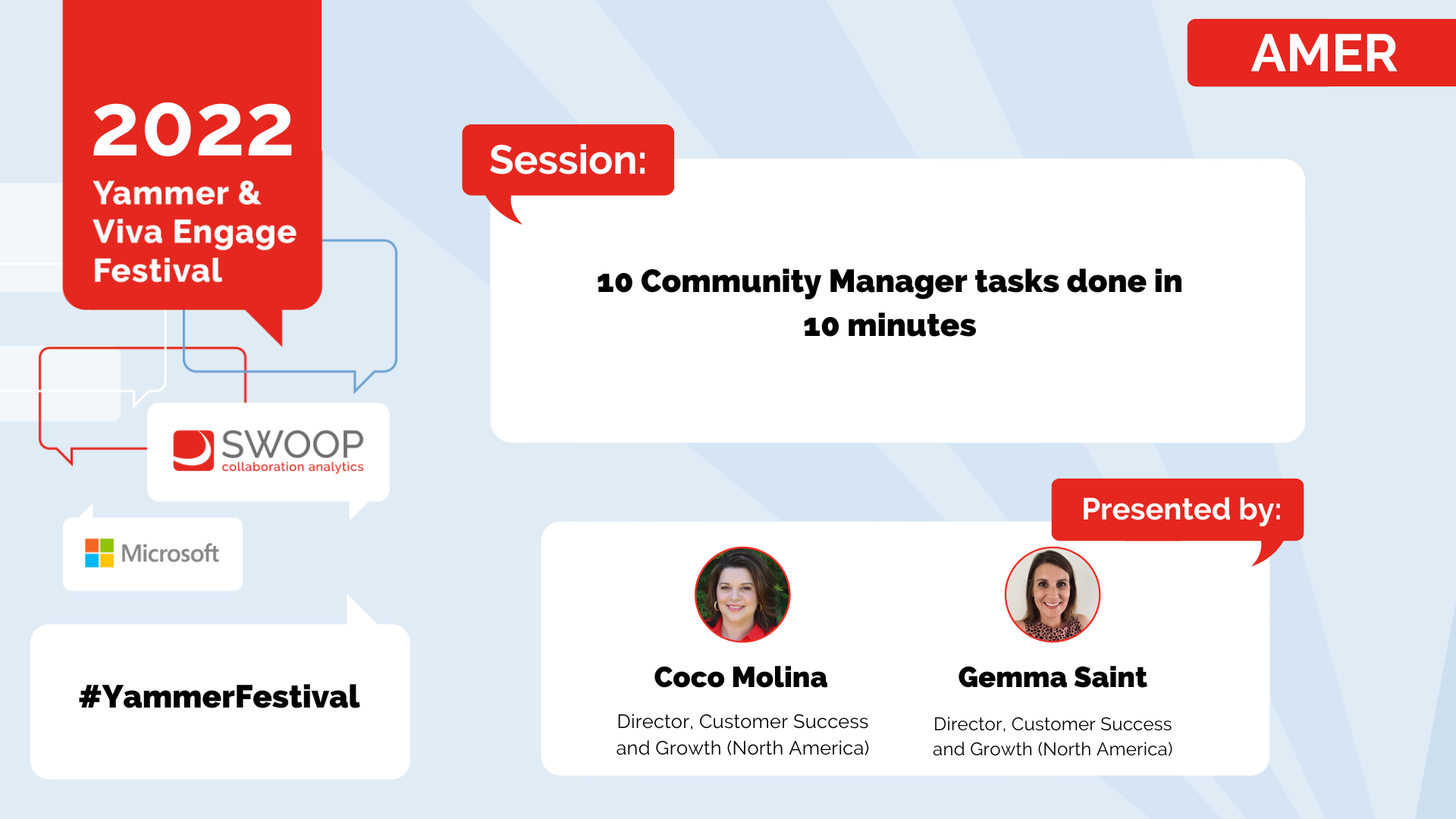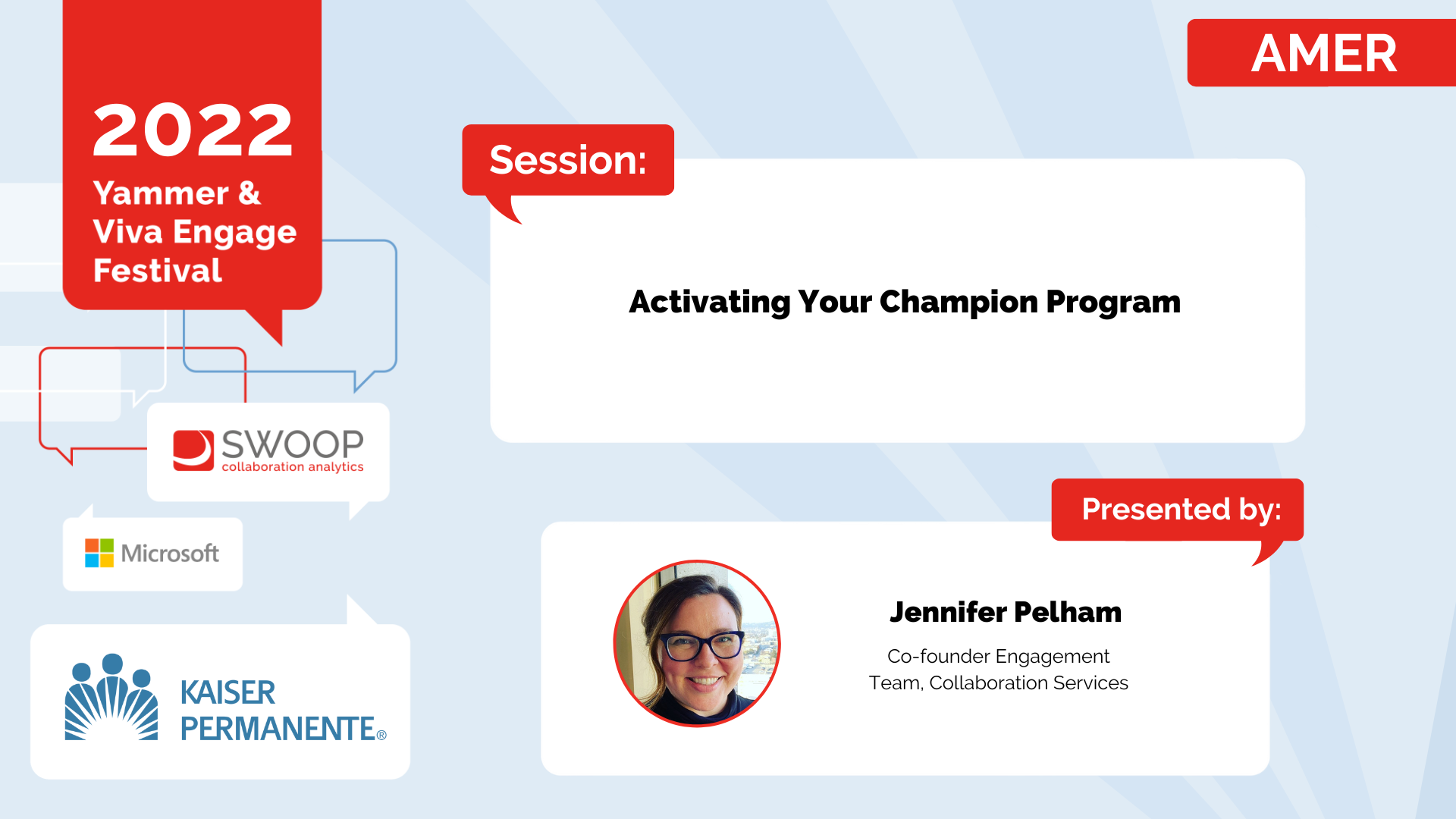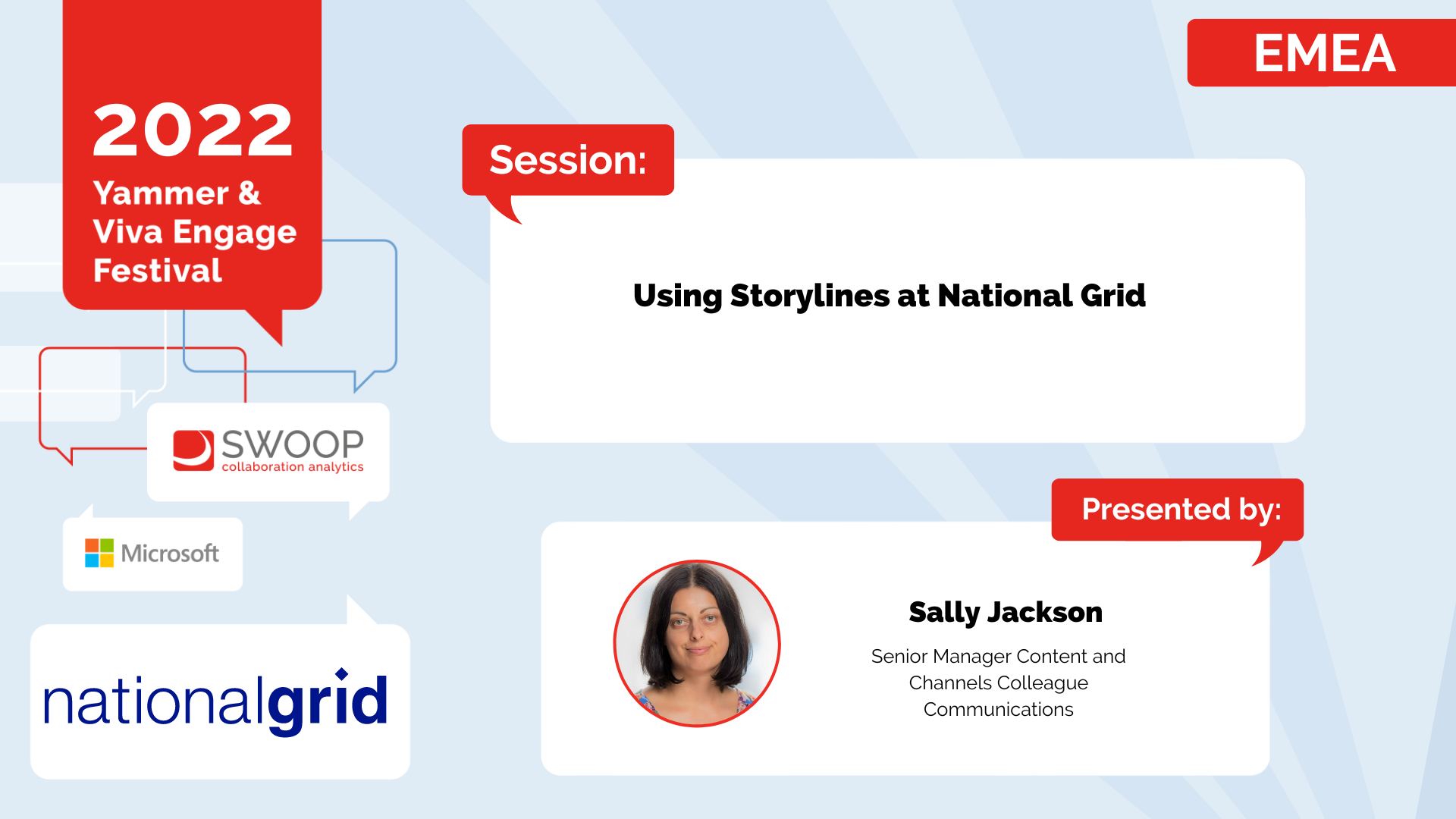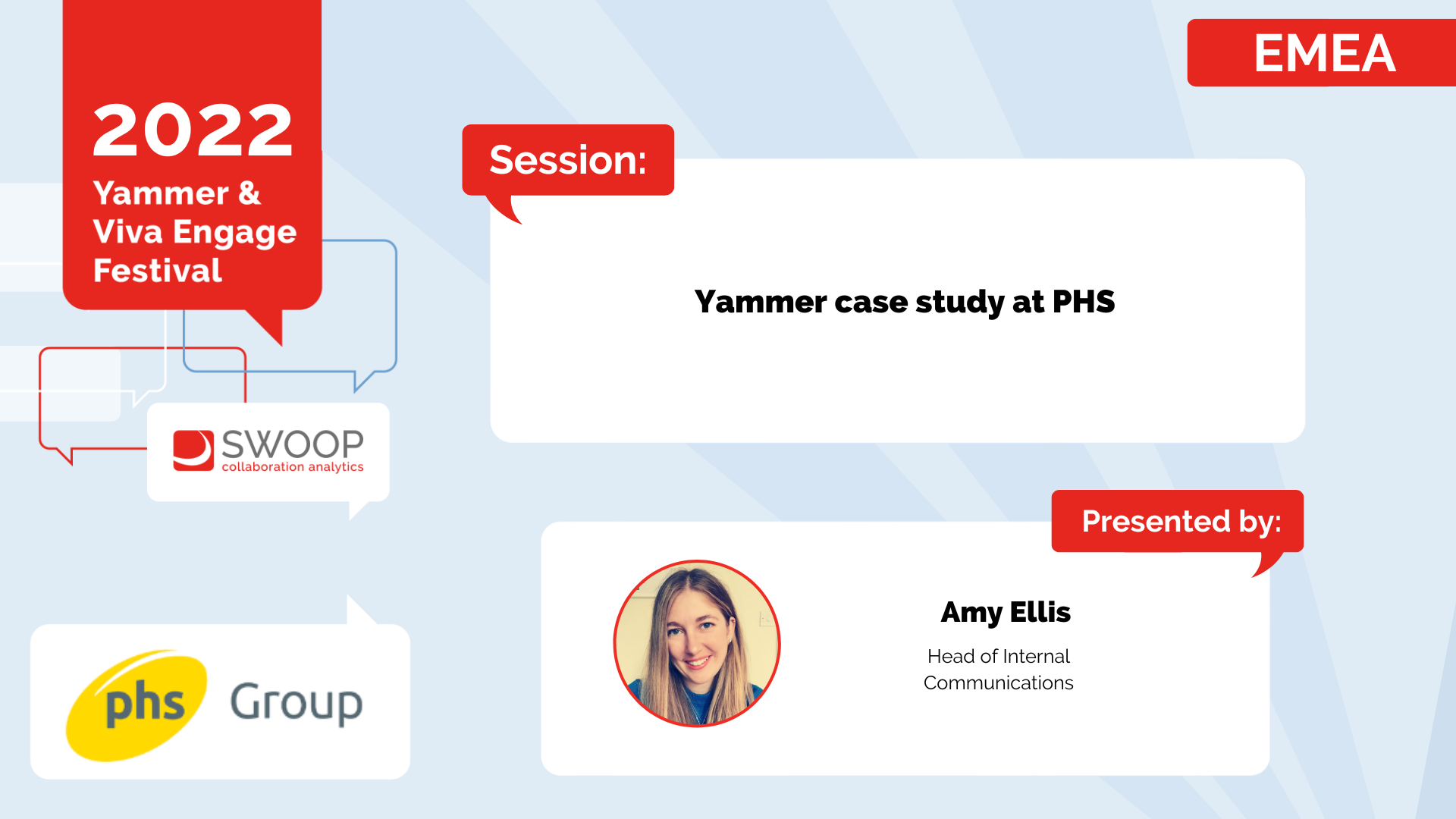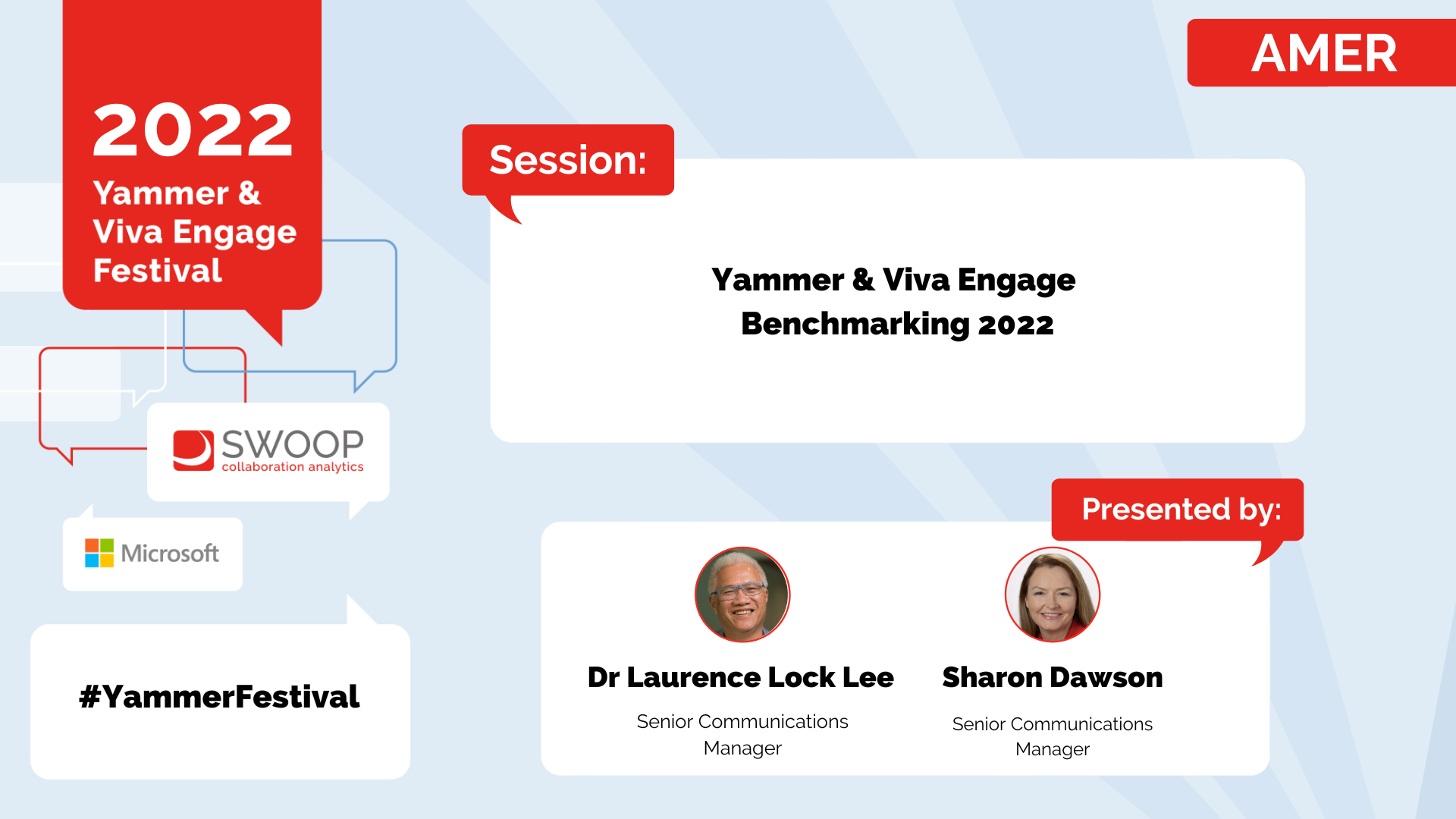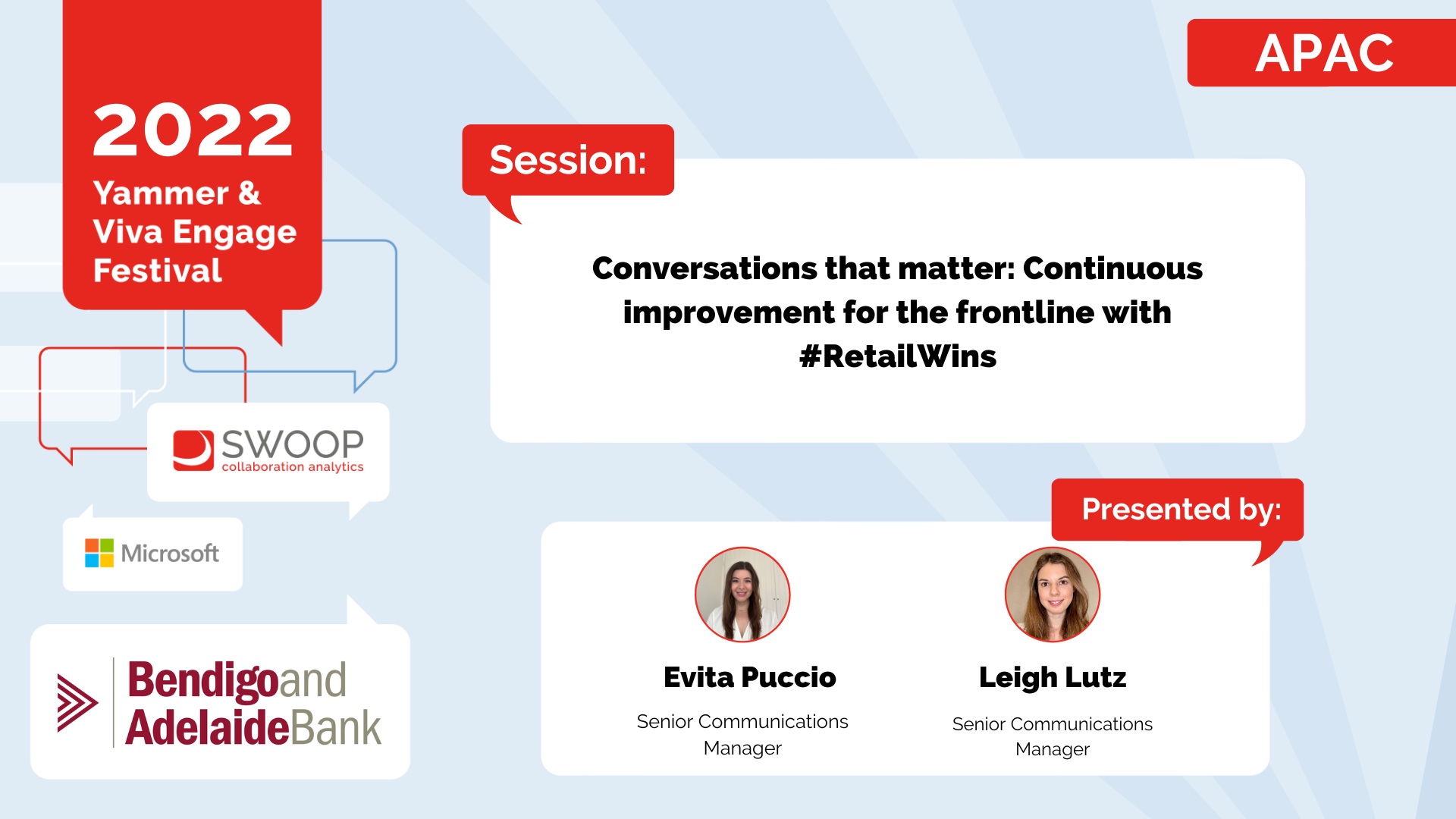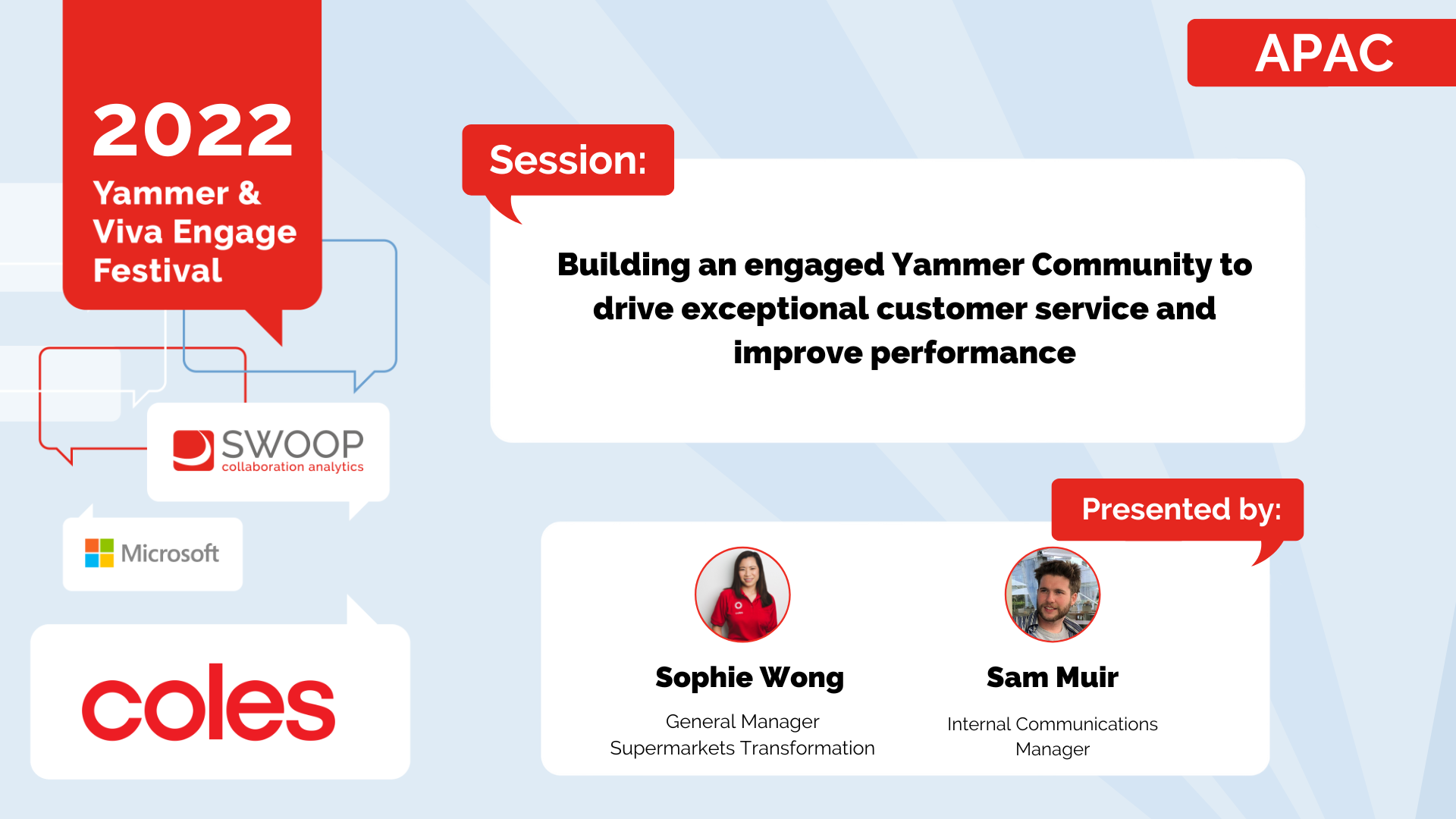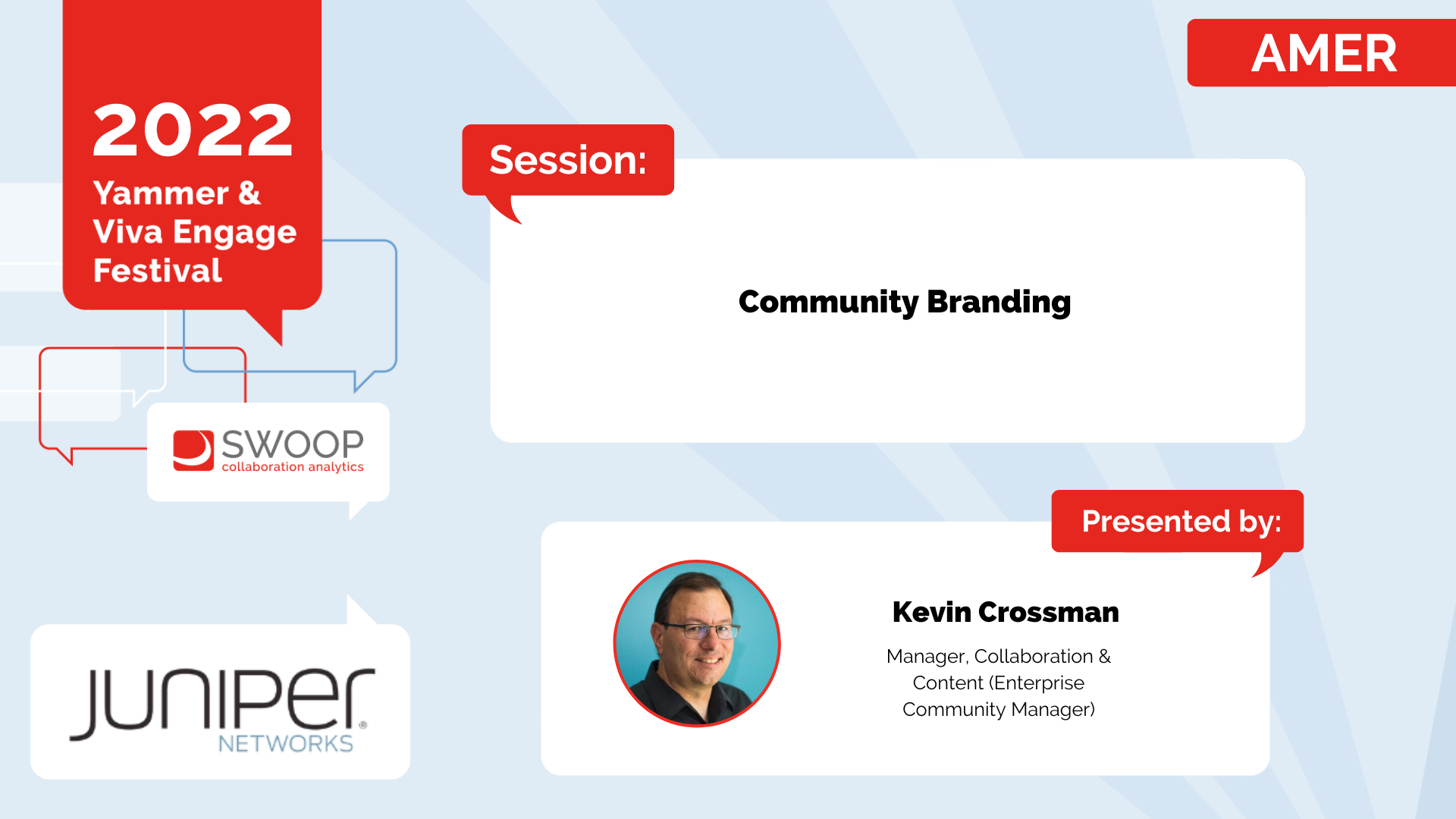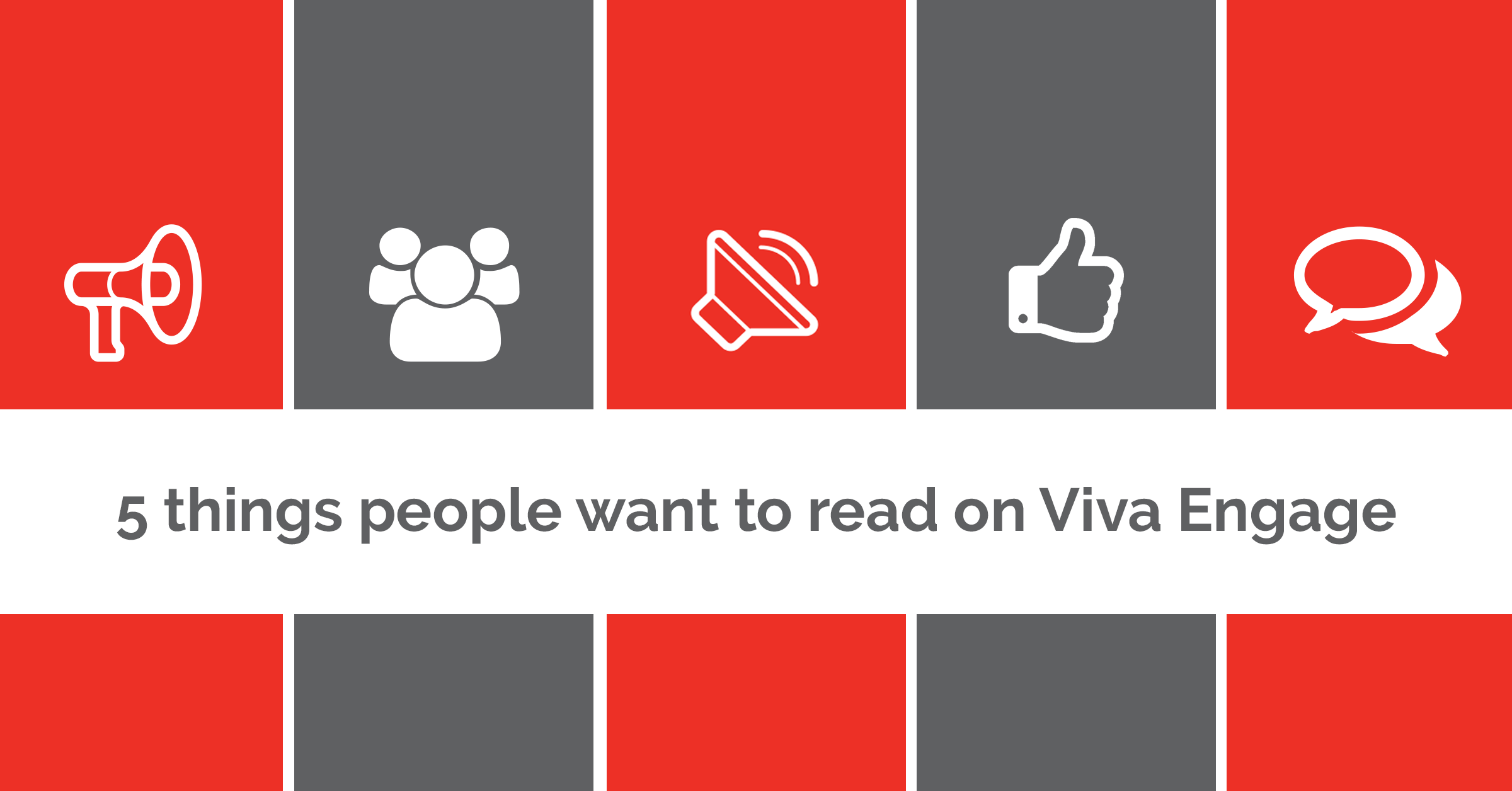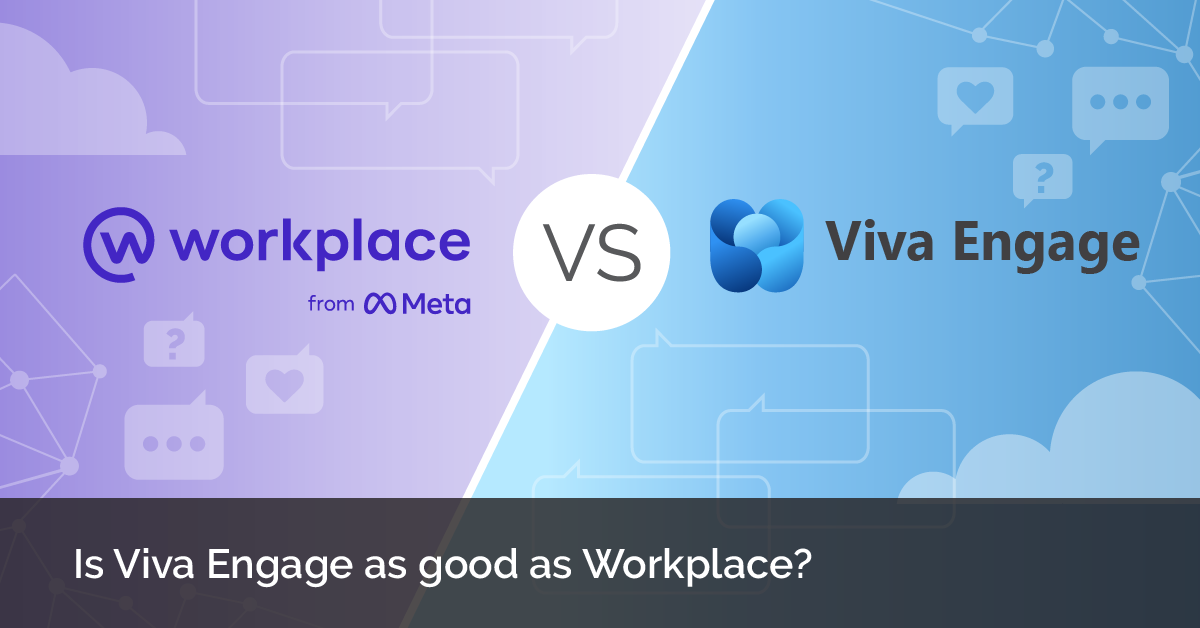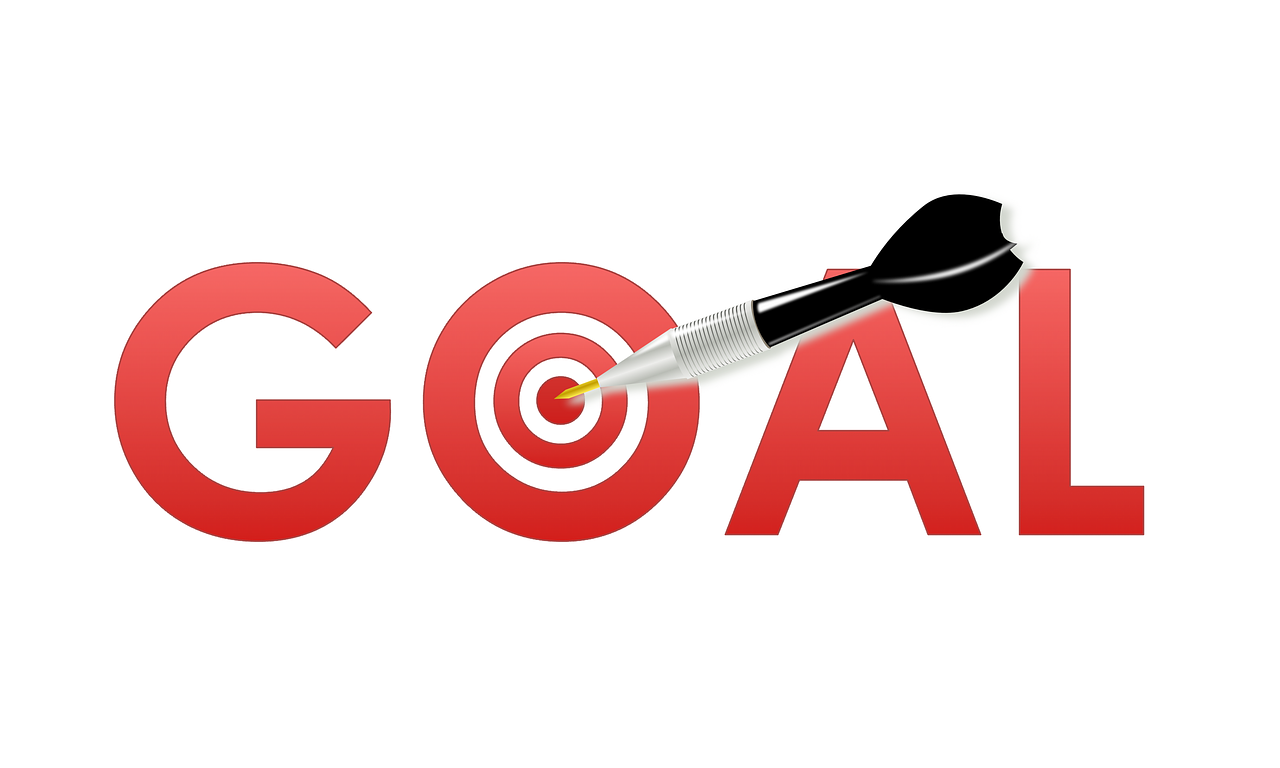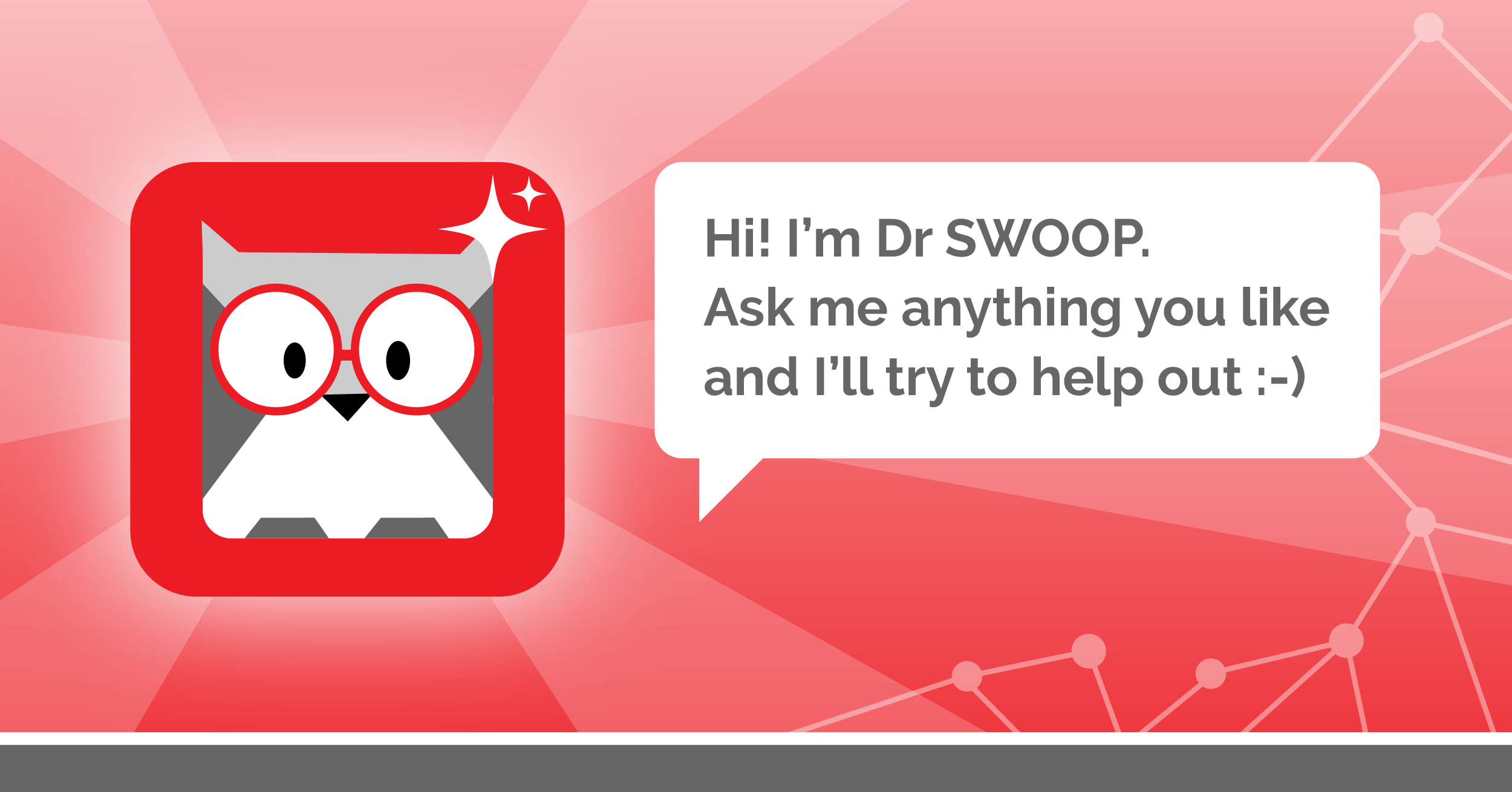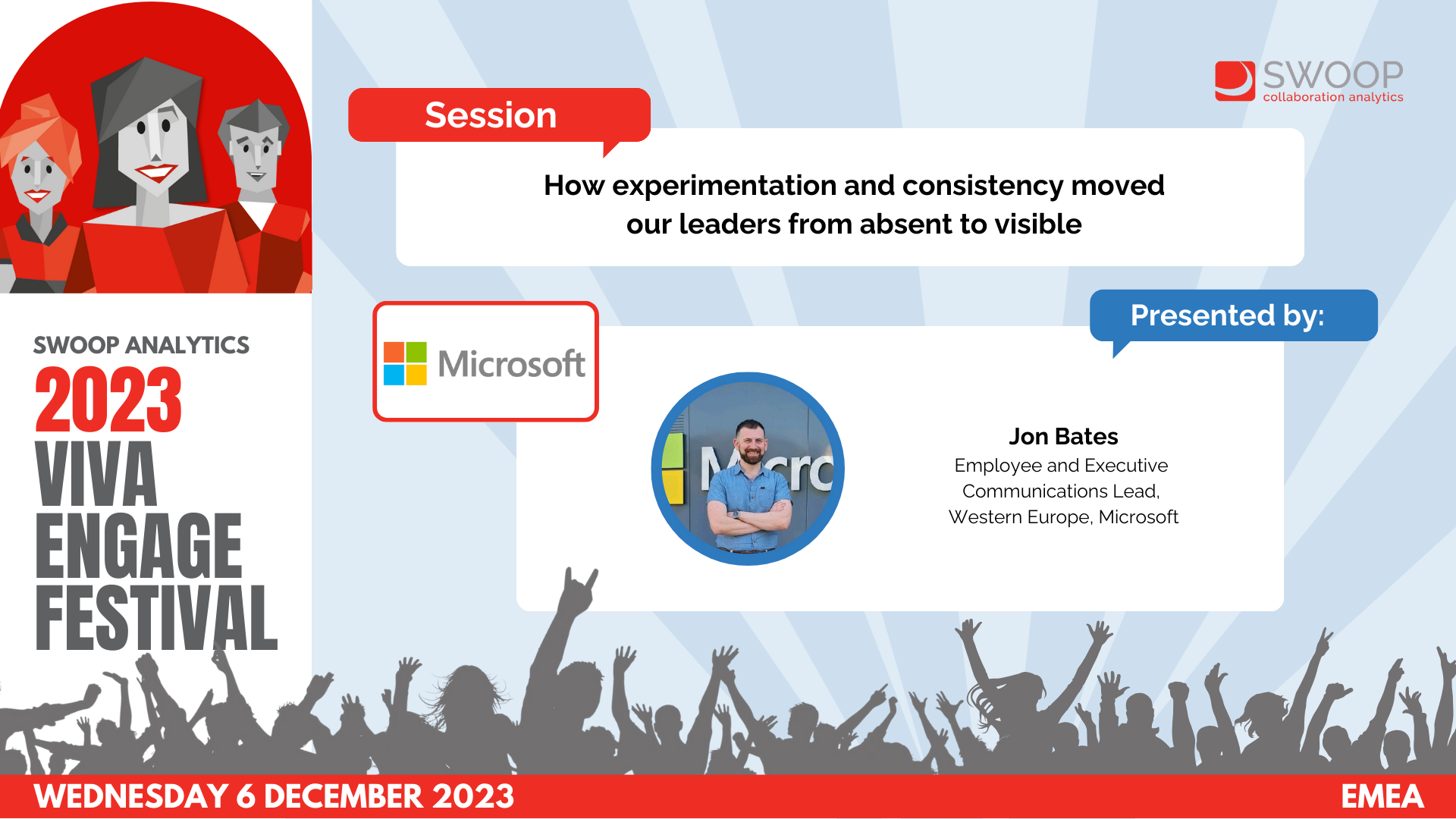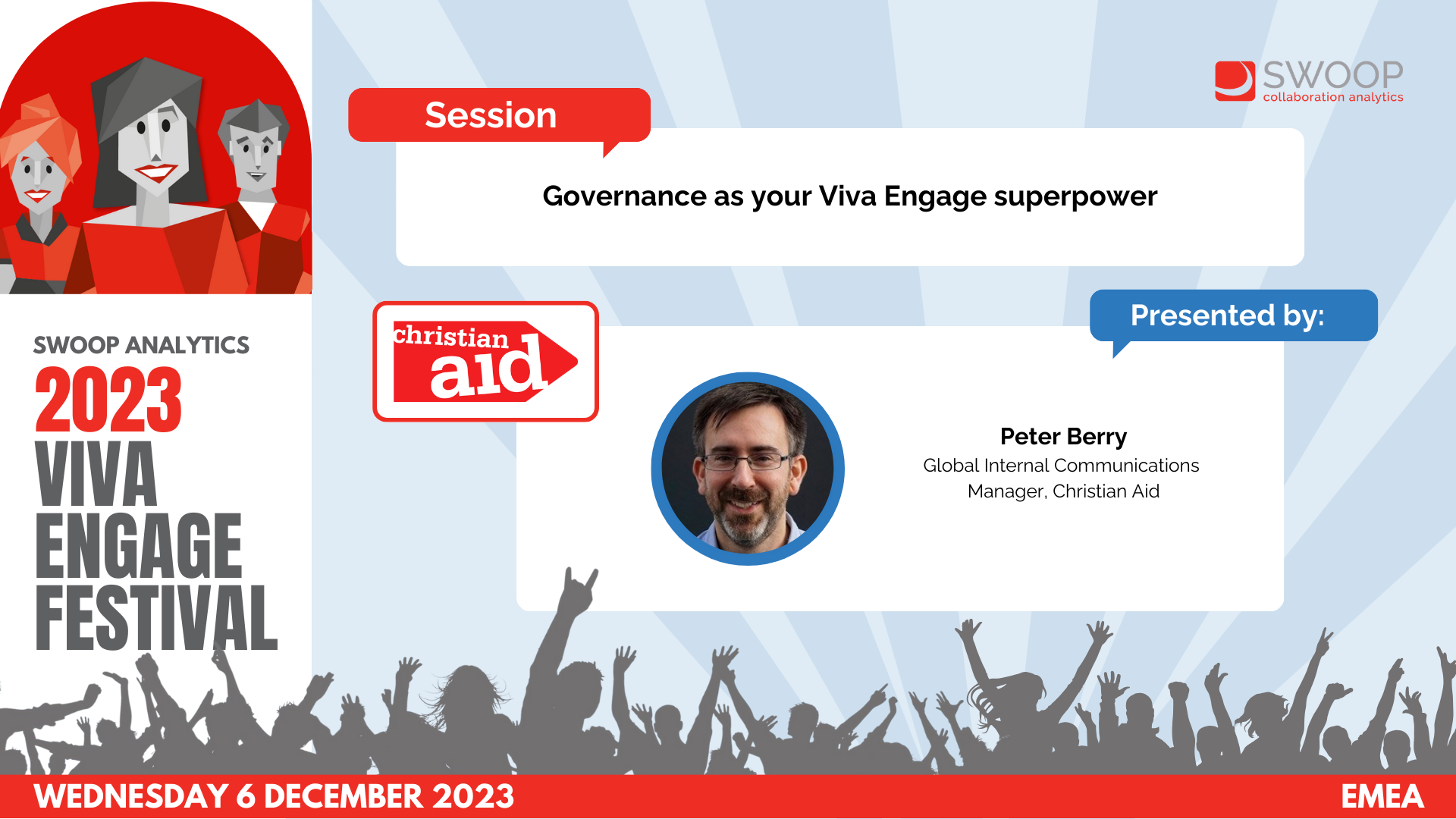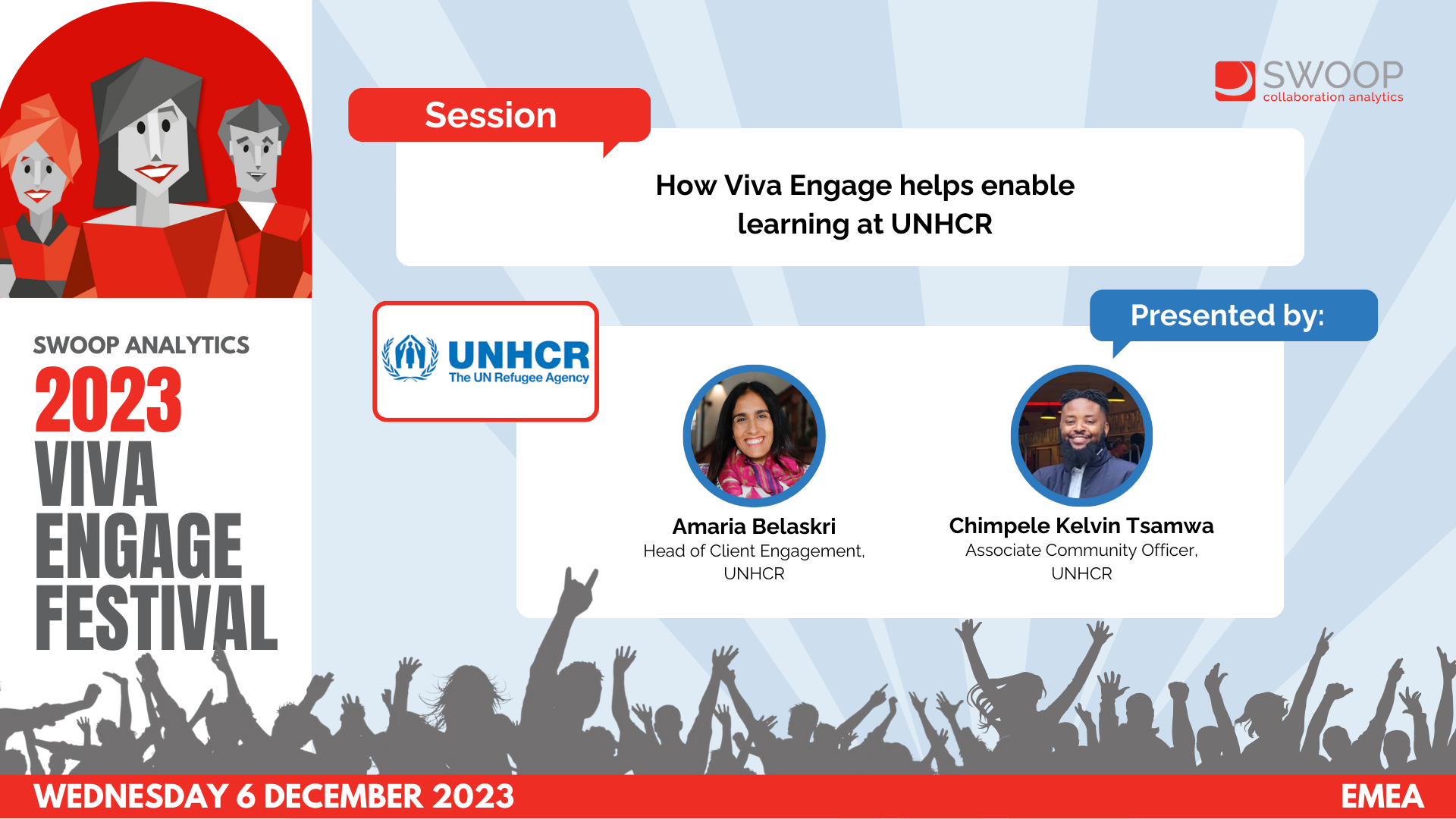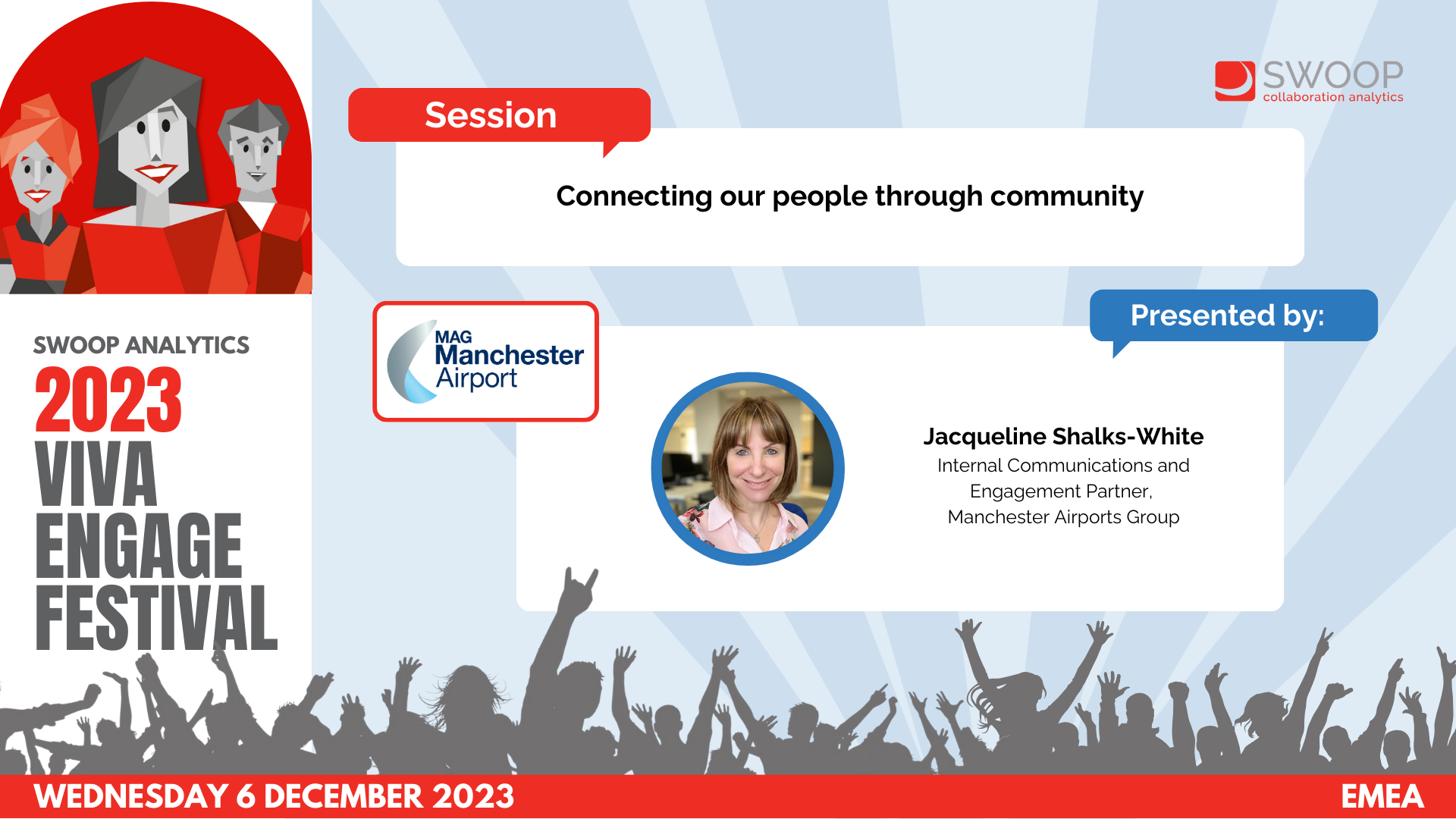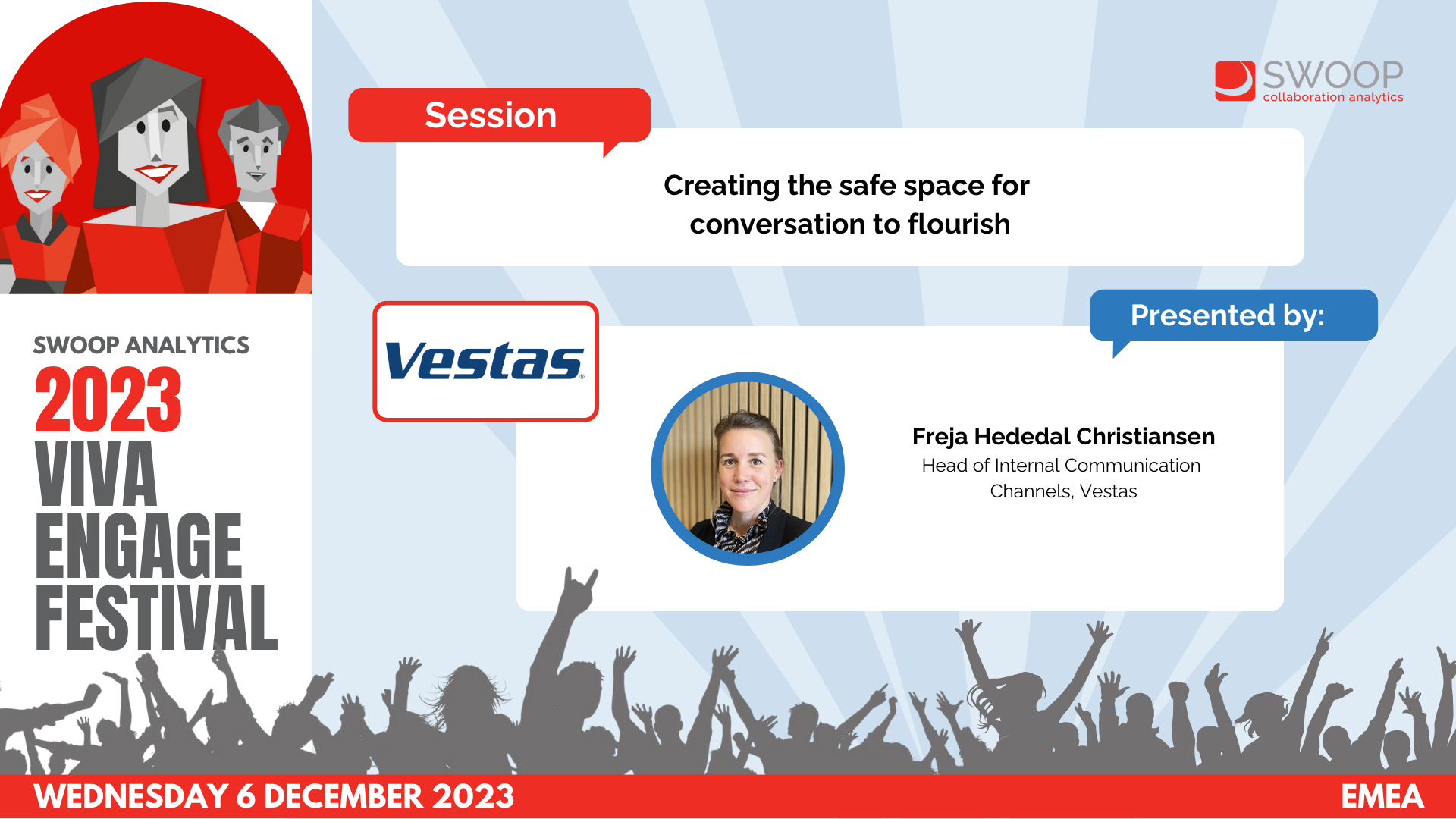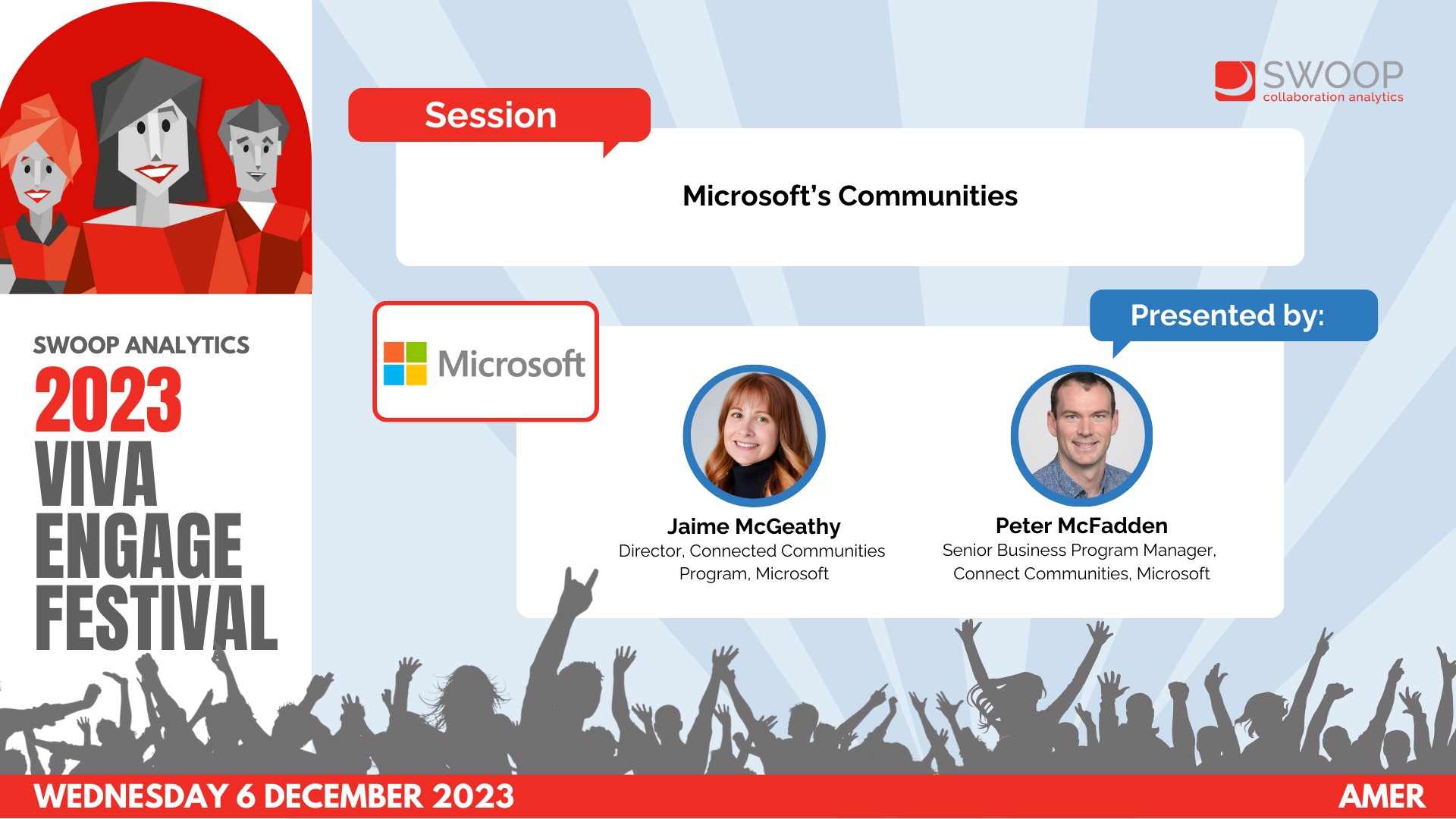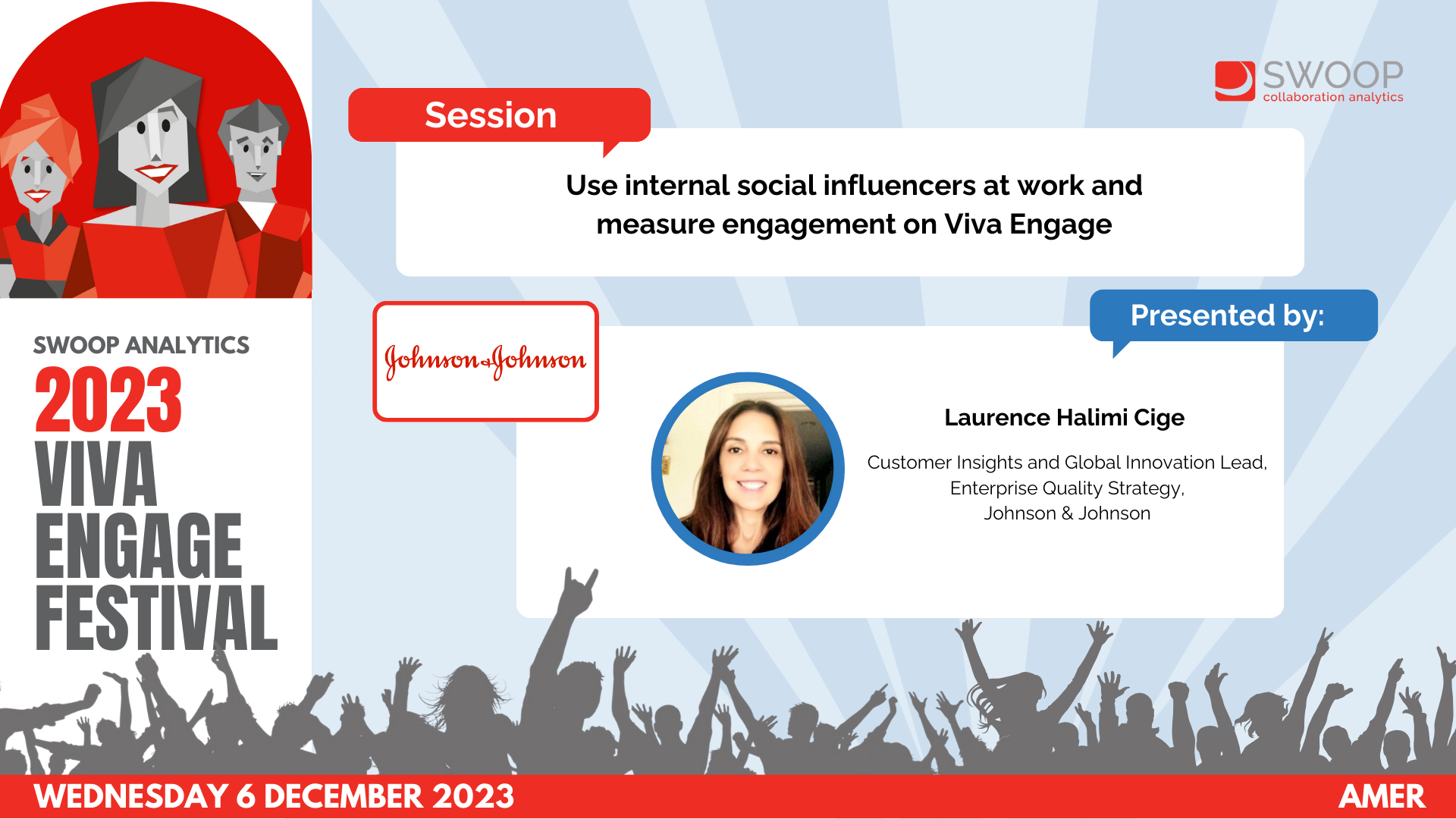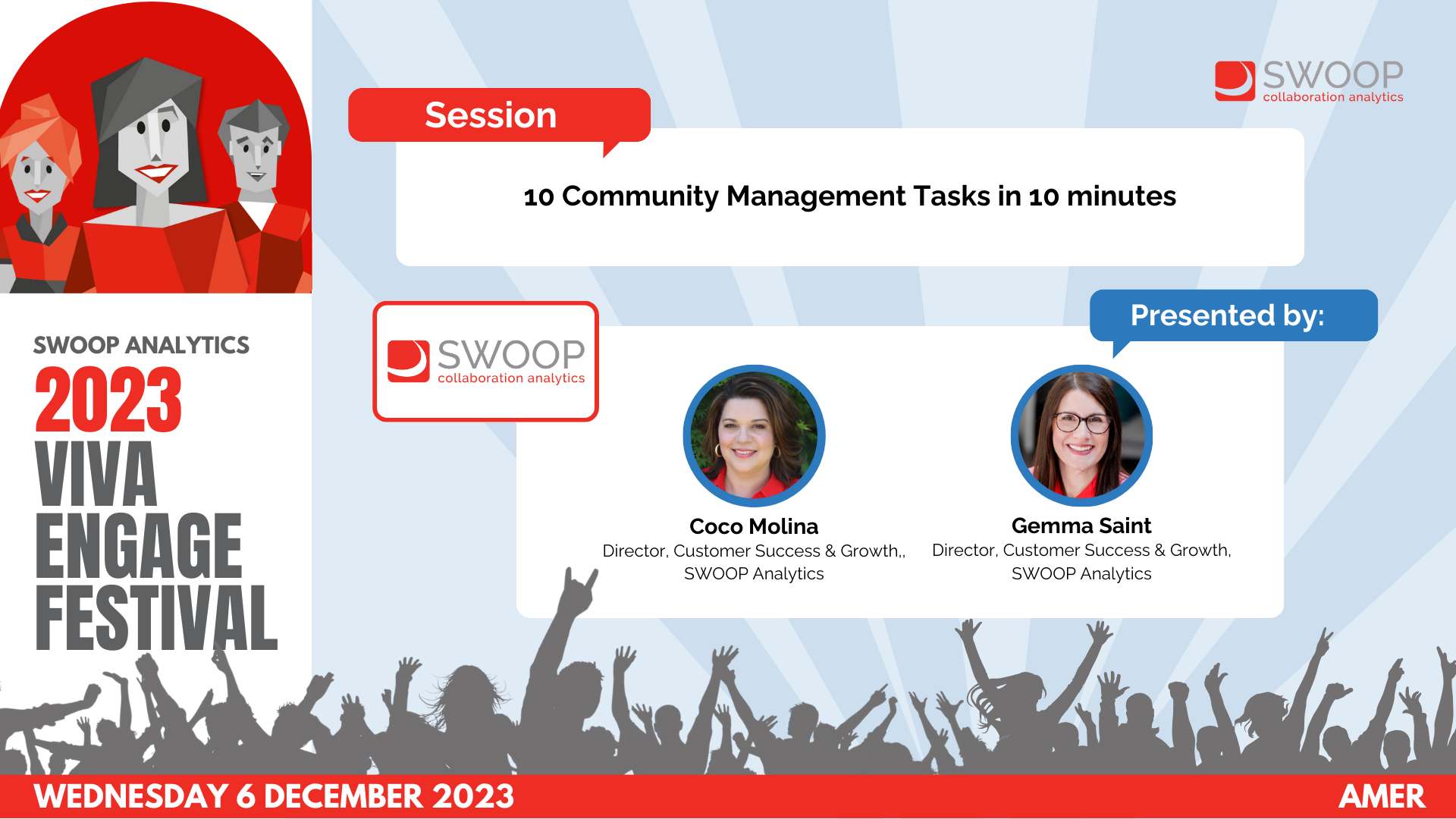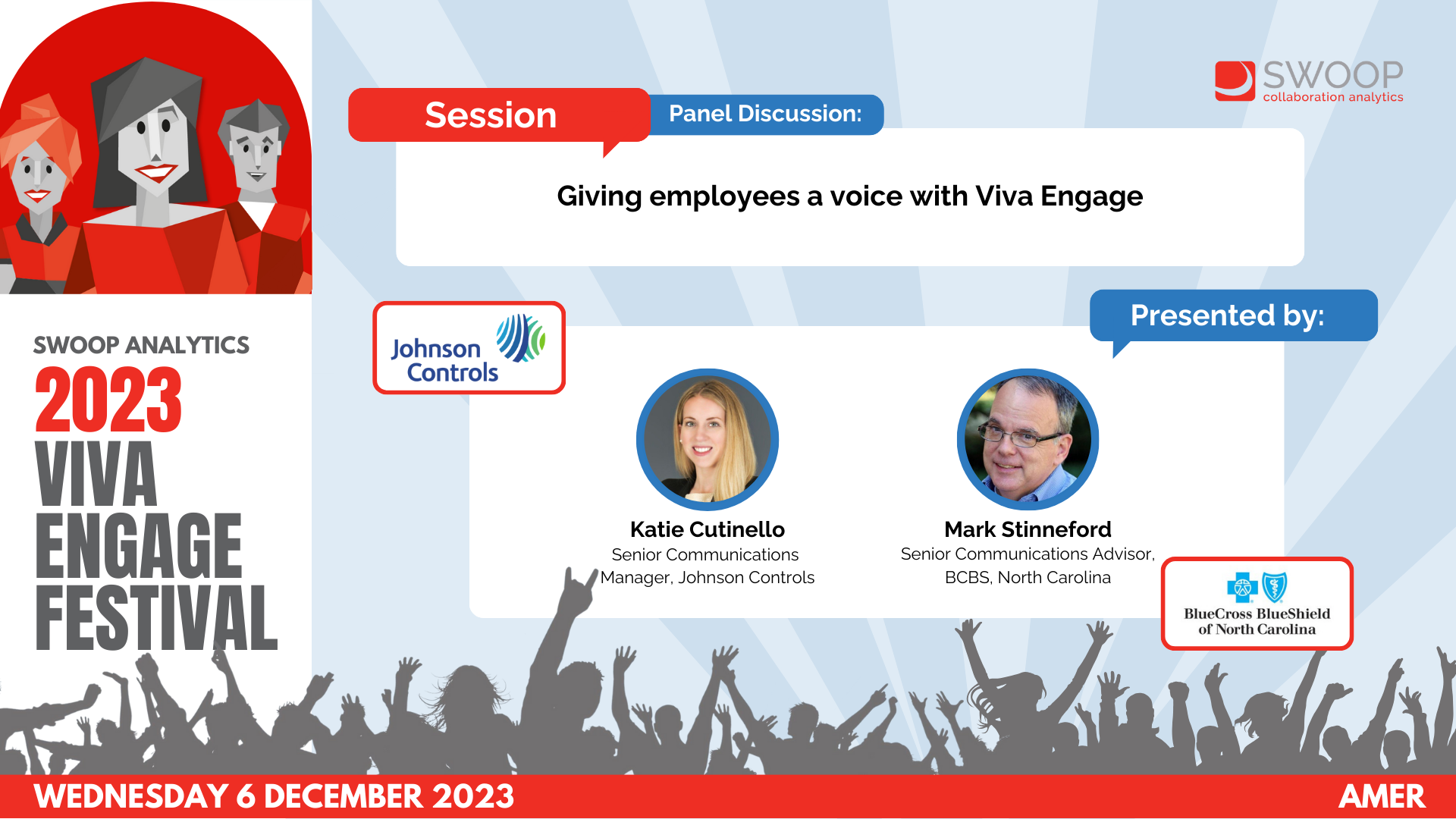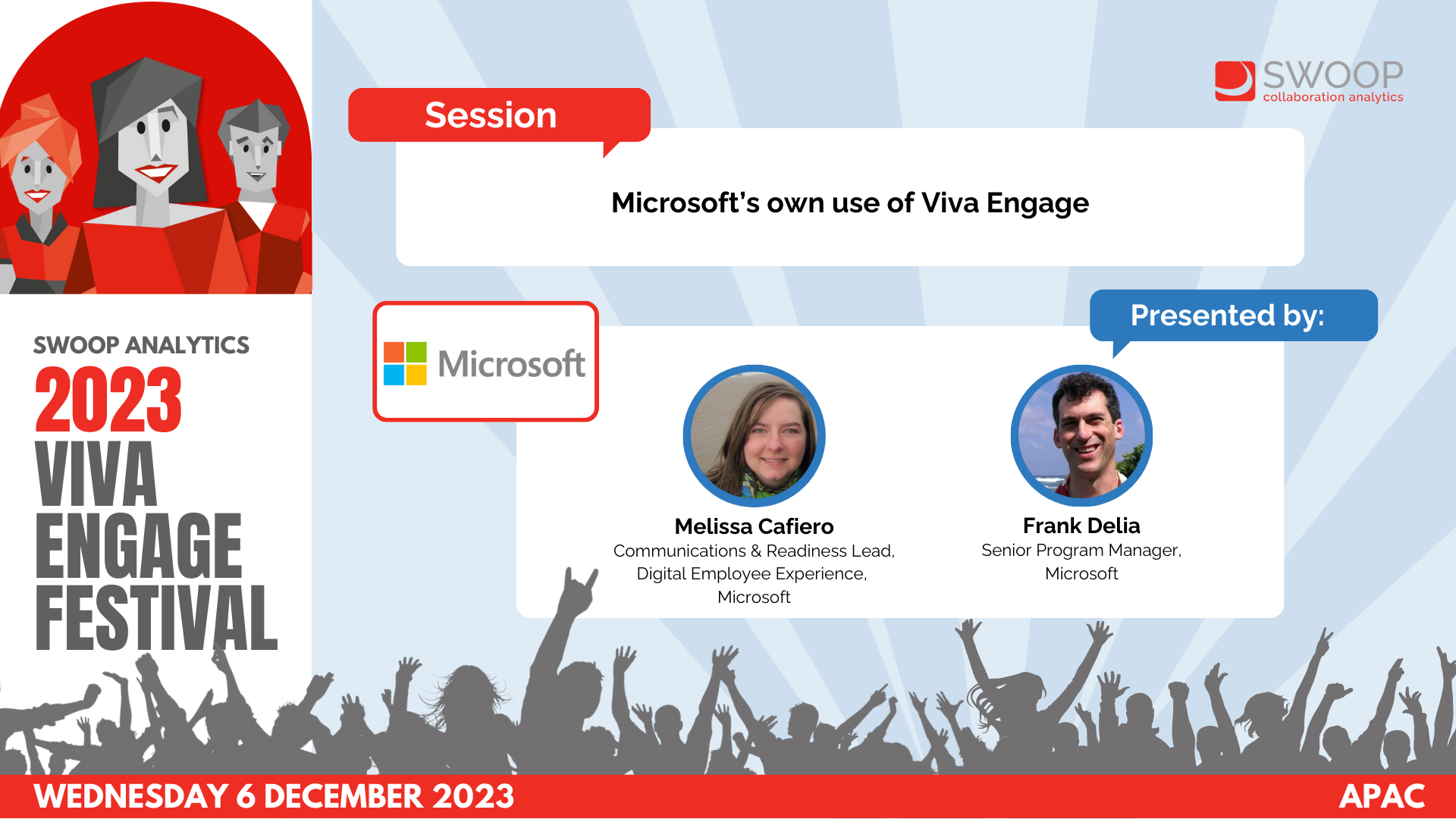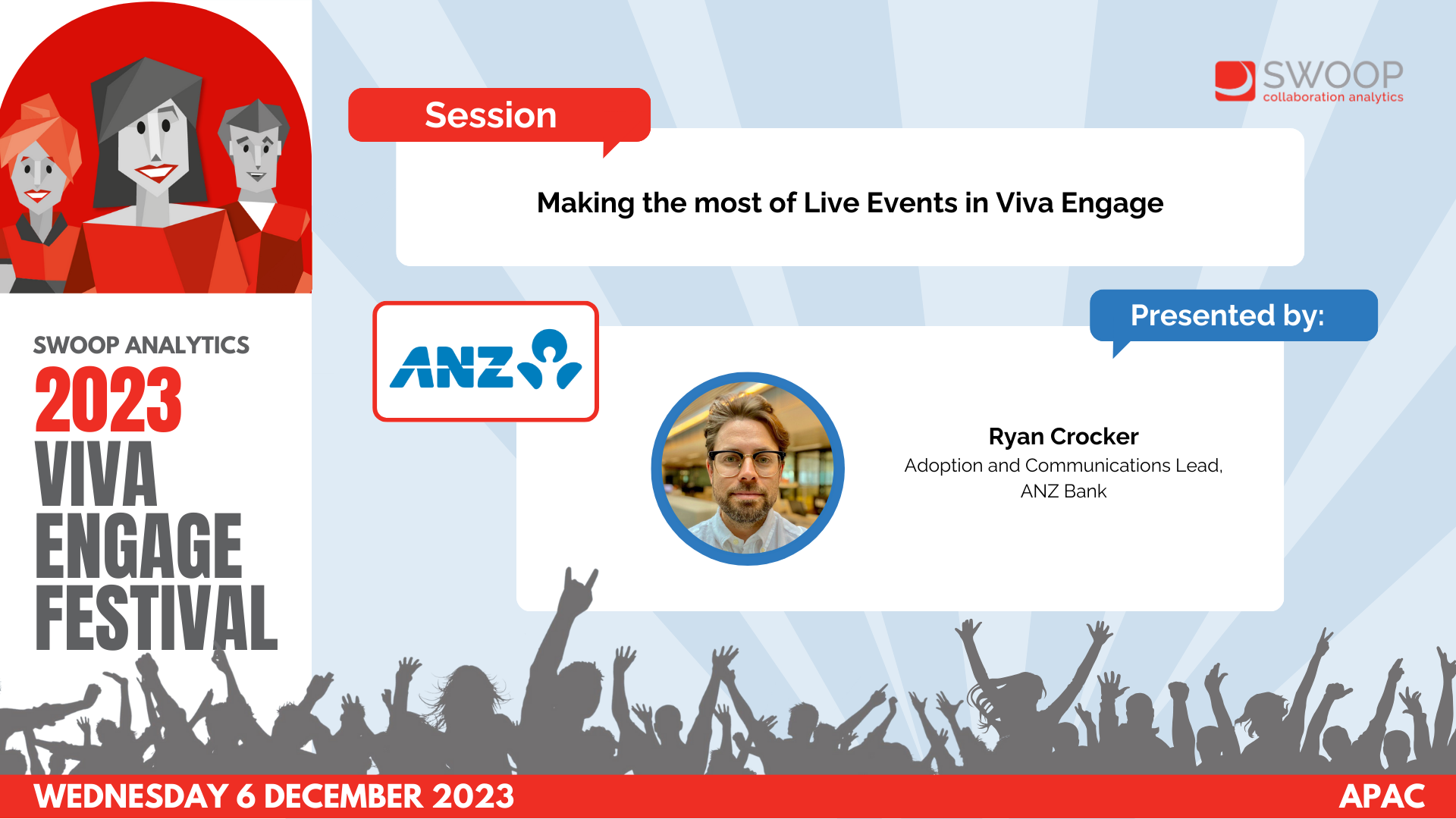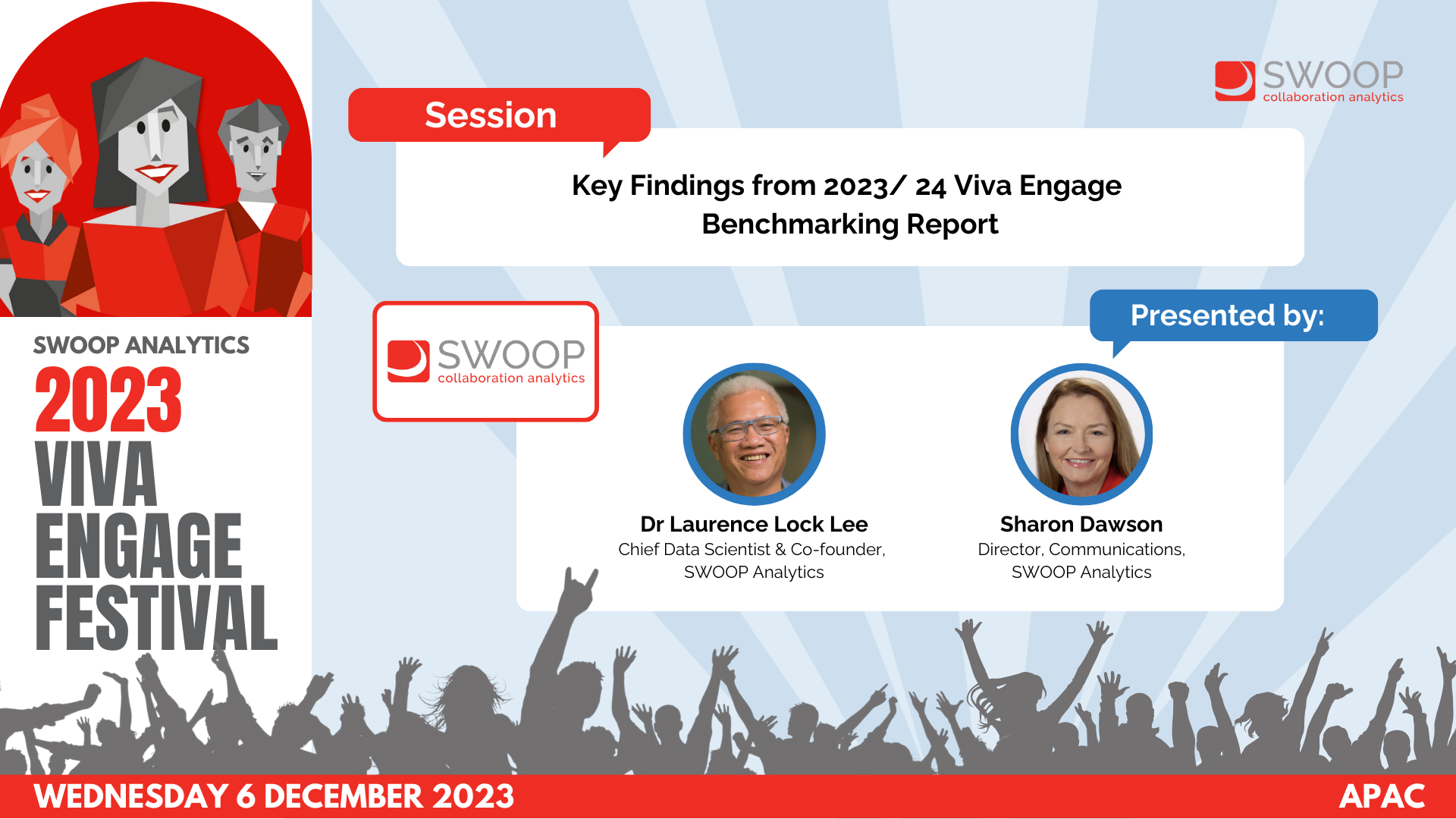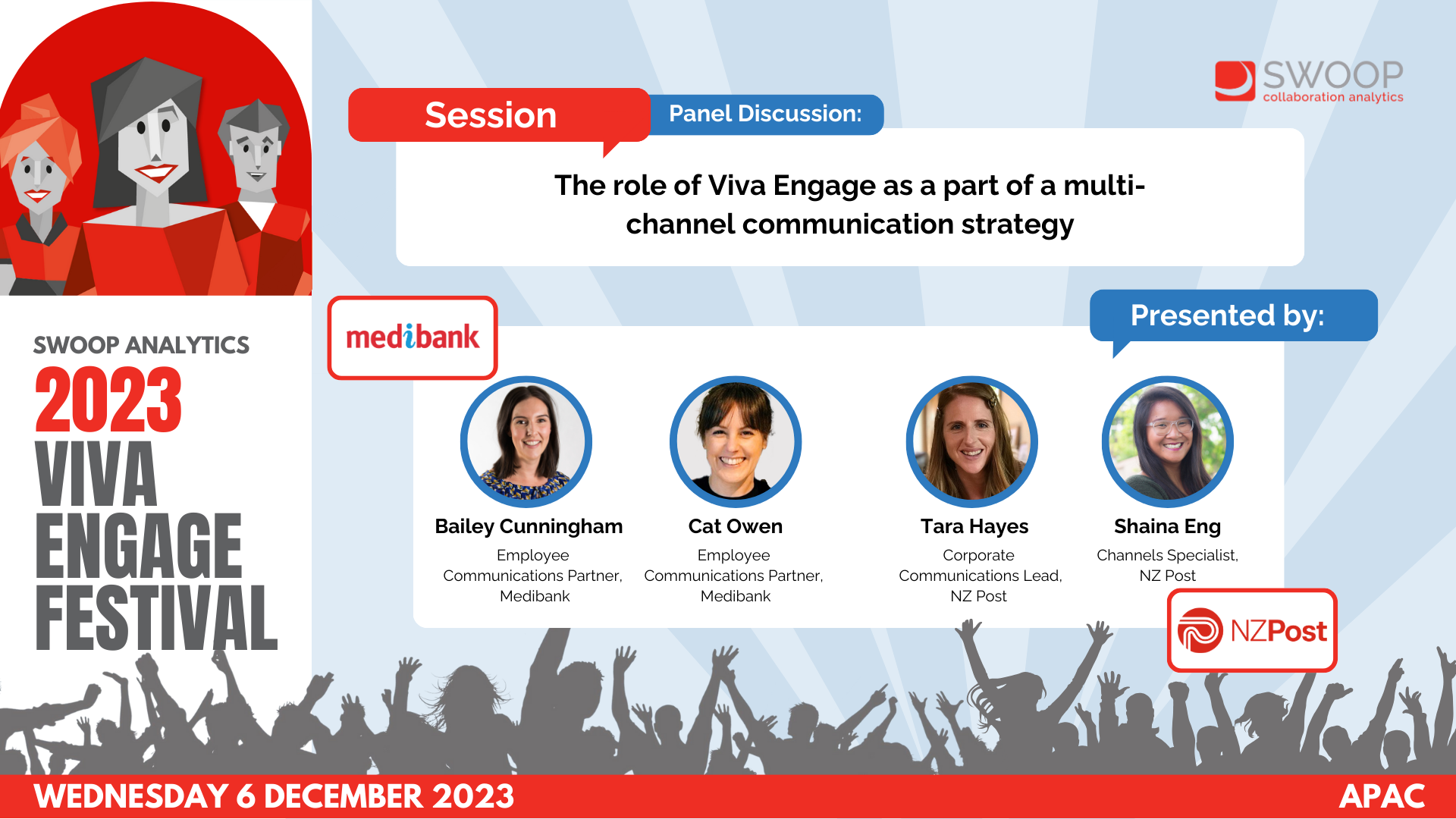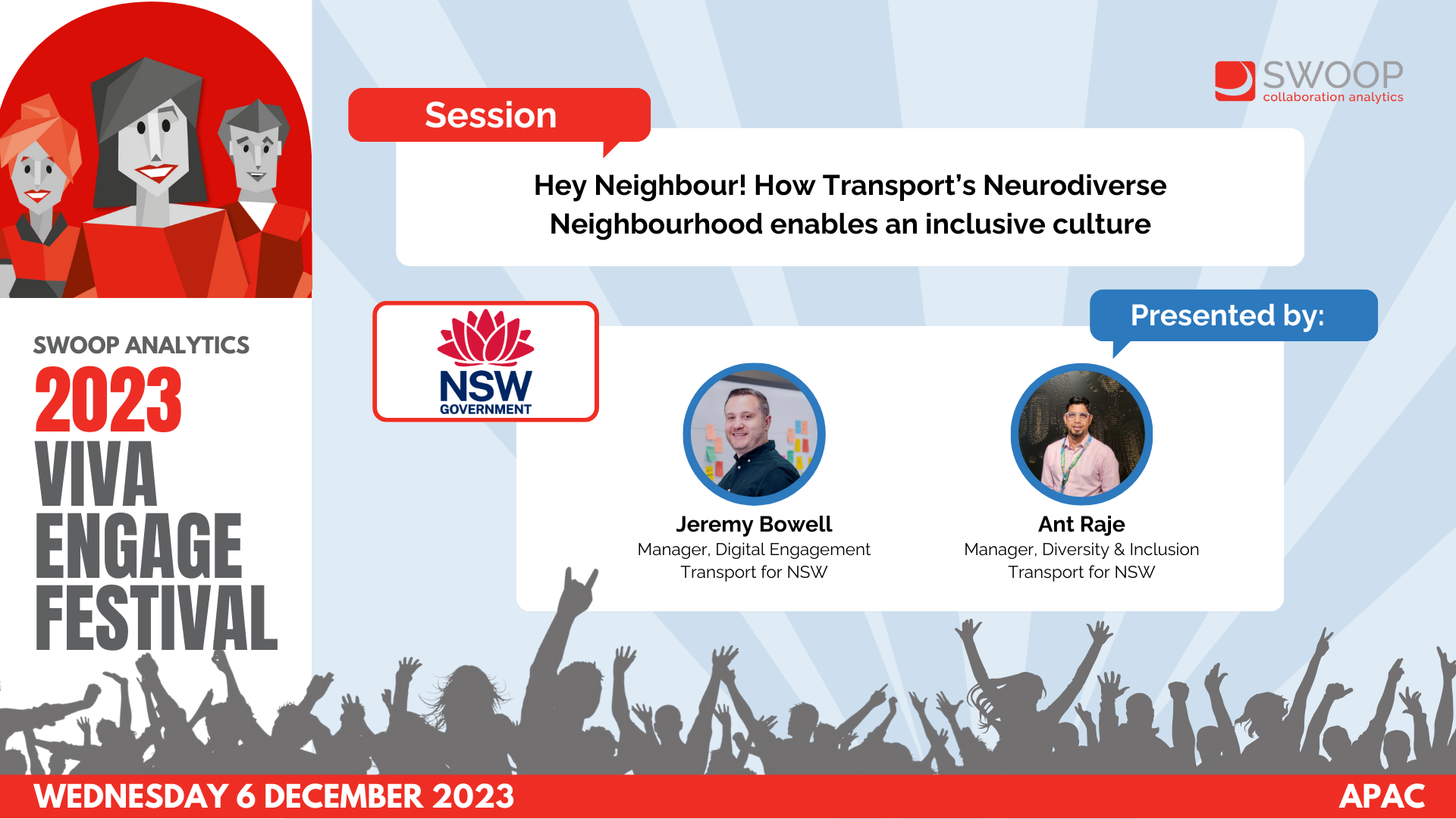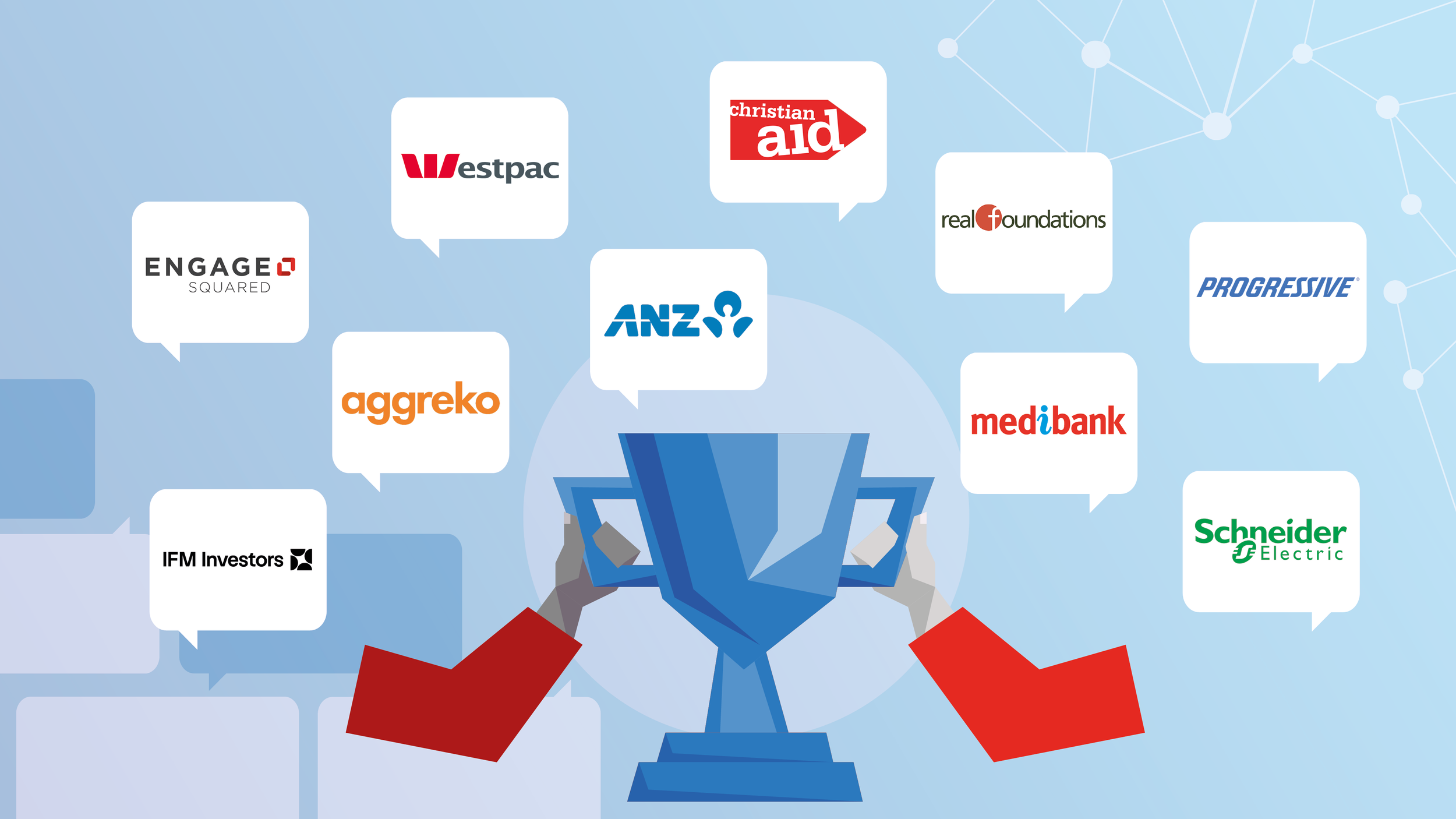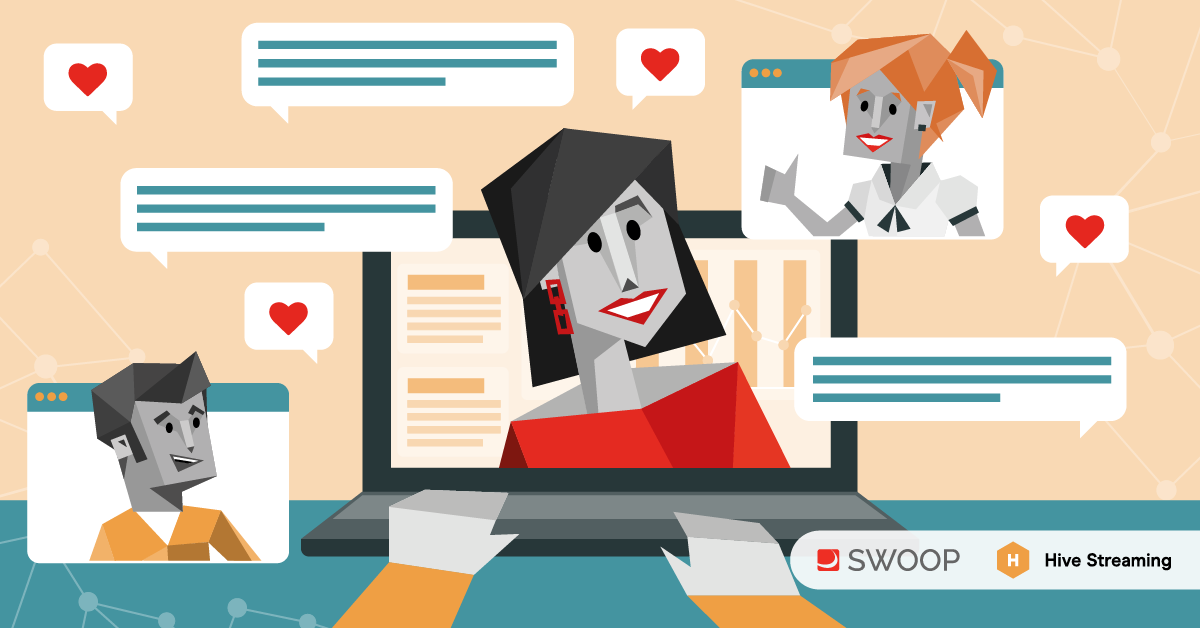UNICEF: 15x Growth in readership on Yammer
AMER | Yammer & Viva Engage Festival 2022
Learn how Paola Storchi from UNICEF have structured the Yammer network to promote knowledge sharing, collaboration, and growth! UNICEF uses a micro-story model to drive engagement and action in its 22,000-strong Yammer community. The session will highlight how platform activity grew dramatically in 2021-2022.
-
So I just want to, you know, as a segue to that, to your beautiful message, you know, the greetings, I just wanted to say to add my Italian, you know, Buona notte and Buon anno 2023 for everyone, to everyone, so that's going to be my start. I love the festive note and, you know, for those who don't know, I work at UNICEF. UNICEF is, you know, the organization that, you know, that it focuses on children, works in 190 countries and territories to save children's lives, defend their rights, and also help them to fulfill their potential, and as we say, we never really give up, and so that's why digital communities for us are incredibly critical, absolutely critical, because help us to connect 22,000 people around the globe, dispersed workforce in all these countries and culture, and especially during the lockdown, we saw that our virtual work increased and that our team, our global team in UNICEF, turned to digital communities on Yammer to connect across borders and time seamlessly and in real time.
Communities for us, it really help, you know, build those connections that are vital to forge relationships, and those relationships are really critical to make us work together, empower each other to achieve even more and save more lives, and the story I'm going to tell you is a story of a great, you know, accomplishment over the past year and so, after the lockdown, where we managed to grow the network. You could see 22,000 people in 2022. We started with 10,000 people back in 2018, and now we have, you know, almost 120 percent growth, right? But not only that, what happened during this time is the growth of membership was coupled with an incredible growth of readership.
We, in fact, increased our readership 15-fold, and that is given through a very, very interesting experiment with it. You know, we call it an innovation. We pioneered a new model of really crafting a short, you know, we call it micro story on Yammer.
It's a 100-word summary that really captures the essence and the evidence of what we do in real time. Now, this model stems from really the idea that brevity is the sole wit and counts on a platform like Yammer, where we're really sharing, like, stories about what we do, and we want to be very clear in the call to action that we have, but also we want to use the oldest storytelling rules. So, how the micro story came, and what it is.
So, it's a story that is told in 300 fewer words, but in principle, we try to limit, you know, the story to 100 words, and it's the challenge, as you can see here, is to really make every word count. So, we intervene really intentionally to curate each and every word to make sure that, you know, we can create the highest level of resonance, but also we can transform the audience in the process and take them to action. And I have, you know, a couple of very interesting, beautiful, exciting examples of these stories and how they moved our colleagues from all over the world to take some very, very important action in what they do.
And so, here's the first one, and this is a story of, you know, a very serious emergency that we have, you know, the war in Ukraine, and how the organization is helping, you know, through our country offices, neighbouring offices around Ukraine, but also in Ukraine itself. And around March, we had this very compelling call to action to join this frontline initiative, where basically UNICEF staff are encouraged to join all these countries and help the cause in Ukraine. And so, we did this call to action, and we had, like, less than 24 hours, over 12,000 impressions, views, but not only, we had the most incredible reactions and comments from all over the world from people saying, like, I'm going to join right now the frontline.
I'm going to help our colleagues in Ukraine. And that was incredible, watching the commitment, the passion, and the absolute, like, the absolute transformation of the audience, also in the process of all our, you know, members, you know, community members in the UNICEF community, they just joined after one after the other, because they were compelled by the colleagues and their comments. So, that was an incredible moment for all of us.
And of course, the results of this is that many more people joined the frontlines. And with that call to action, we helped the organization to deploy the best, you know, the most resourceful people on the ground. Second story that I wanted to share, which is also, is a technical, more of a technical story, but very important, very important, because we have many of these technical stories in UNICEF, it sometimes is very difficult to capture people's attention around projects that, even if they're very, very exciting in nature, sometimes the story is not told in a way that really captivates the audience.
And so, we have this wonderful project that we actually do with Microsoft, it's called Primero, is an information digital system that we help to create to make sure that we help the digital transformation and digitalization of many of our sensitive records in relation to child abuse, domestic violence, violence, et cetera. It is widespread in more than 70 countries. Not too many people know about it, but the implementation is really, is really what makes UNICEF very proud, because it was a really a transformation of a manual recording system into something that is digital.
So, we did like promote this Primero and its implementation in Cambodia, but really crafting a short story and calling really our colleagues to share where else in the world Primero was implemented, what we do with that, what are the challenges, the opportunities, what we learned from that. So, in less, again, than 24 hours, we got all these impressions, we got all these reactions, but also he had like comments sharing the implementation of Primero, what they were learning with quotes from leaders on the ground from different countries, really telling us this is what we do and with that, and then let's take it, let's take it to the next level, let's learn from more people and let's ask for help when we need it. So, we also help to connect the people around Primero, the people that were not otherwise connected to anything that has to do with the platform.
So, that was really important and what counted was the call to action, which was really simple and concise and because the story was powerful and was basically capturing the essence of it, we also role model, you know, capturing the essence of other implementation of the tool through the comments, which was really impressive. It's how our colleagues are really role-modeling this micro story model. The third example is another exciting one and it's about drones, you know, medical drones, which we use during COVID, but also we use, you know, even most, you know, urgently during the outbreak, you know, the various polio outbreaks, but also the Ebola outbreaks.
And then these drones are like an innovation, a total innovation, they're saving lives, they're cutting really the time for delivery of medical supplies, vital medical supplies. And as we showcase an example of, you know, how we use the medical drones in Rwanda with this story, short stories, you see the impression, a number of impression, as a total surprise, we got many countries, starting with Malawi, Ghana, and then we went to Asia also, Pakistan, and then go back to Western Central Africa, to Senegal, showcasing what they're doing with the medical drones. And then these countries, again, and these colleagues didn't know about it, they got excited, and they try also to explain what was the difference between the, you know, the different implementation of it technically, but also they were so proud to share what that type of innovation can do, you know, in real time and saving lives.
That was really, really special, special story. And we were very, very proud that, you know, with Rwanda, we opened up, you know, all the beautiful stories of medical drones in UNICEF, and now we're innovating with technology again. And so, and this is a beautiful story, and it's about like, how this investment in, this intentional investment in curating each and every words and creating this short formats that people can relate easily to it, took us to 12,000 members.
As I said, we started with 10,000 members, very few people engaged, and now we have 12,000, you know, 22,000 people actively engaged on Yammer. And we're all very proud. And this story itself also shows, you know, how many people reacted and how happy people are about, you know, what Yammer is doing for them, which I think is very important.
It's not only connecting, but also connecting to what is really vital for you to do your work better. And here's a just quick analysis of what happened in 2000, you know, in the last 12 months, we would say. I think the activity in the platform really grew tremendously, but also we had like 4.1 million of activities in the first six months of the year.
And then as I said, we scaled up, you know, the readership in a way that it was really unprecedented. But also another thing that happened, which you can see it from the data, we cultivated the UNICEF community, which is our main feed, in a way that now we have, you know, over 20,000, 21,000 people active and with many more posters, intentional posters, strategic posters, micro storytellers all around the organization. And we love, you know, to role model that and to get that to the point that then the quality will be even, you know, stronger.
And here is just a little snapshot of how we grew the UNICEF network at UNICEF. You know, we were, you know, many less people, as I said, and then between 2018 and 2022, we really had like 9,000 people more. Most of it, you know, accounts for the time of the lockdown, I would say, like 6,000 people since 2020, which is really amazing and helped us to showcase how a very, most strategic and deliberate use of Yammer can build, you know, safe space, trust, but also create that kind of a very strong connection between what's in it for you, like I do my work better and I promote the visibility of my work wherever I am, whether I'm a leader or I'm someone else in a country office.
So it became a very democratic, and I would say, channel to make sure that, and safe channel to make sure that we are all, you know, part of the same community and we empower each other to achieve more. And here's a bit of the value that, you know, this brings to UNICEF, and I love to say cultural transformation first, because it's where our culture is really shifting, and I would say during the lockdown, this happened in a way that it was unprecedented, how people turn to the digital communities and join us, right, like more and more and more. And obviously, there's this coming for, looking for real-time solutions, when, you know, this is the only place where we have this two-ways conversation, and the real-time solution can be really thought through and spur new ideas, which takes us to the knowledge-sharing at scale, because that, as we said, with PRIMERO, the implementation of PRIMERO, it would have taken a long time to get all these examples from countries if we didn't have that structure, engagement, and conversation on Yammer, which, by the way, made people very happy, because finally some of their projects were made visible, and they got congratulated from colleagues, including from deputy executive directors at that time.
So, and here, I wanted to say something very important. We've been, of course, we love measuring the impact of each and everything we do on Yammer, and we're so grateful that we have super analytics that help us really to do that in real time and with such a depth. We also use surveys and many case studies to make sure that we complement, that we have some, like, you know, some qualitative feedback on what we do from the people actually managing the communities, joining them, or simply the people are reading, and then we see that, like, what, you know, people really care most in UNICEF is to having that connected organization, creating that even more connected, but connected for a purpose, and also being part.
This is really clear for us, being part of a group or community that really makes a difference for the way you work, and you can show how you can make a difference, right, to all your colleagues. And, of course, I mean, what we love to do to take this to is to a much more innovative workforce, because we see that the serendipity and the sharing of ideas, the example of the drones, knowing that all these innovations taking place and people are influencing each other, you know, to achieve even more is really gratifying, but it's also showing, like, the value of Yammer as a channel for really fostering innovation. And here's the way, is a little snapshot of how we really capture the best of this conversation using super analytics, the most engaging posts, and then we go back to them, we analyze them, and we really actually love to see how they take, you know, they take our colleagues to the next level, how they follow up on that, and how we can emphasize them, even curating more micro stories.
And here, I just want to leave you with what our staff, you know, 22,000 people out of 190 countries and territories, some of them have said these things about why, you know, joining Yammer and participating in Yammer is really doing for them, and what, you know, they feel and the value. So, I'll leave you with that, and I'm very happy to connect with you and, you know, listen to your questions and comments and reaction. Thank you.
Thank you so much, Paola. That's such an inspiring story, I think, and I think the fact that you're, you know, your micro stories, that you definitely make every word count, and the love to your call to action, so people know what you're asking of them, I just think it's incredible, really, really great. So, we do have some questions that I'm going to ask.
So, amazing to see the impact of powerful storytelling. Did you use other communications to drive people to Yammer to check out your stories? Yes, yes. So, this is a fantastic question.
So, what we use, that's in the title of the presentation, it's really what we call it an omni-channel approach. So, we try to reach, you know, every colleagues that we have, and we understand, we're very mindful that they have different digital habits, and so what we did, we tried to surface these micro stories and to also let them be promoted through other channels, like our YouMessage, which is, you know, the bi-weekly newsletter that we have, the global, it's a really pressure instrument for everyone of us to be really in the loop of what's happening in the organization, and by promoting them and featuring them, we had that kind of, we created that resonance between the people who are actually on Outlook and the people who are on Yammer, but also some of them also went to their, you know, SharePoint pages, so we created that kind of, you know, almost a loop, you know, effect that, you know, if you don't find it on Yammer, you find it, you know, in the YouMessage, or you find it in SharePoint, right? So, it's very, it's a way to reach everyone, but the message was, like, let's transform the way we communicate, and let's really use brevity as our, like, focus, brevity, conciseness, but also action. Let's be action-oriented.
Yeah, brilliant. So, Caj's asked you, well, obviously, you have people in such remote places, and can, so can everybody access Yammer at UNICEF? Okay, so this is a, this is a great, amazing question. So, I think a couple of years ago, we had some issues.
We could not reach all the people, right, in the organization, because many, many of our staff were not, like, were not probably introduced, you know, to, you know, to Yammer, and to basically activate their accounts, etc., but we did, you know, work enormously with our colleagues in IT to make sure that everyone is reached, and it's clear that, you know, once you're part of the Office 365, you know, suite, you actually need to activate your account that you're in. So, we saw the growth of membership over the past couple of months, and year, and the two years. That happened because that effort was really focused on trying to get everybody in, but also, it was complemented by the fact that people now see the value, because the content is really much higher quality.
So, it kind of comes together, but yes, it's always, you know, it's always, like, a challenge to reach everyone, but I think we, we're, you know, getting there. Amazing, amazing. I don't know if you want to explain, I know when you took Kaj and I through these slides about the rebranding of Yammer.
Oh, yes. And the Yam? Oh, the Yam, yes. Yes, yes, that's amazing.
So, so we've been, like, always thinking about, you know, rebranding Yammer, like, also the metaphor behind Yammer to make sure that UNICEF people understand that this is about, like, building connection, is about building relationships, it's about sharing, it's about being, being really real-time and digital, becoming, becoming the new, you know, hybrid digital leaders. I mean, Yammer is one of, it's a part of it, right? It's not only Yammer. So, we started with build, it was our, you know, model for really making that simple.
It was an acronym, and we'd build a house, and the house, you know, all the architects in UNICEF are the person who are joining the community. But then, you know, most recently, we had this kind of inspiration, you know, kind of an eye-opening, we said, like, oh, you know, the Yam, the Yam in the, in the Yammer name is really, like, a very interesting symbol, and we created an icon for that, and then it's the Yam. And so, anything that we do now in Yammer, we try to mainstream the Yam as part of about, you know, a more relatable, and I would say even cuter way to talk about, like, things that are so critical for us, which is, you know, really about working together and achieving more.
So, it's a way to really bring, like, more, like, the human element and getting everyone, you know, you know, more tuned to it than, than, yes, than us. Brilliant. I think we just had a comment, actually, that I think, yeah, from Chris Mellon, just demonstrating that, like, how you're speaking today, what you're telling us, we can, they can see why that you won the community, the Yammer community award.
So, just well done again, very well deserved. We had some really, really strong nominations, but it was just, yours was so meaningful, and you have done, and it's such an incredible job with Yammer at UNICEF, and I think to have that increased engagement, 22,000, you know, 22,000 people that you could talk to, your numbers have grown incredibly in the last 12 months, and I think it is a testament to the work that you've done, Paola. So, very, very well done to you, really well done.
Thank you so much, Emma, and thank you so much for the people who nominated me and for this incredible award. And as I said before, I think, like, the credit goes to all the people in the community who actually, you know, are driving also the adoption. I've been really, you know, loving, you know, to guide this and lead this and role model this as much as possible with the team.
I work together, but I think, you know, the way they have shown that, you know, they trust the platform and they trust, you know, the curation of its content and taking Yammer to the next level, including storylines, you know, I think our micro-story happened before the storylines and it's just a little bit of our internal, like, precursor, but we love to, we love really to embrace, you know, new ways of using the power of storytelling to create, like, a transformation and ignite action in the network for children. Amazing, amazing. Thank you so much.

